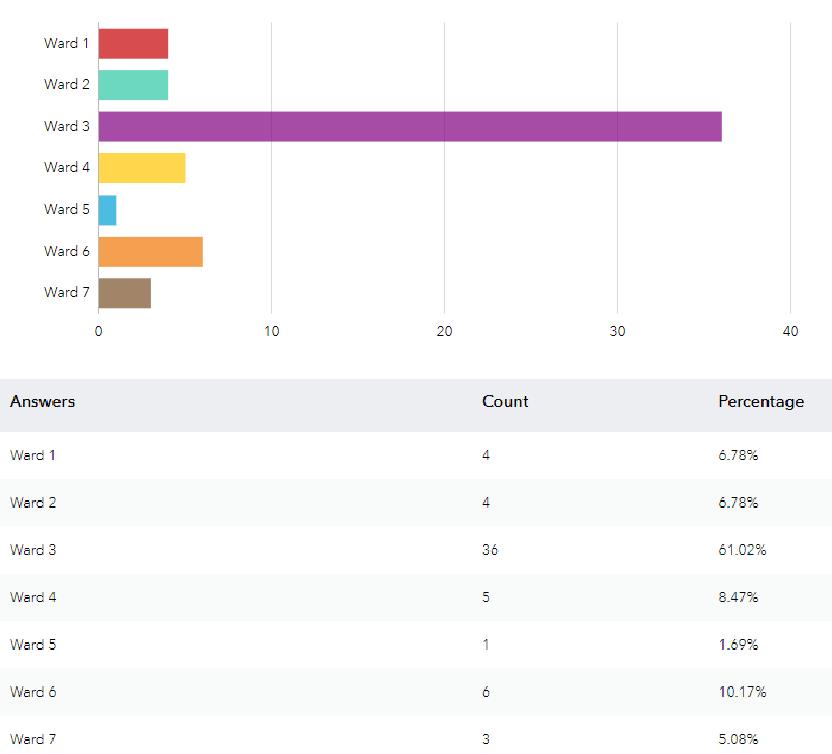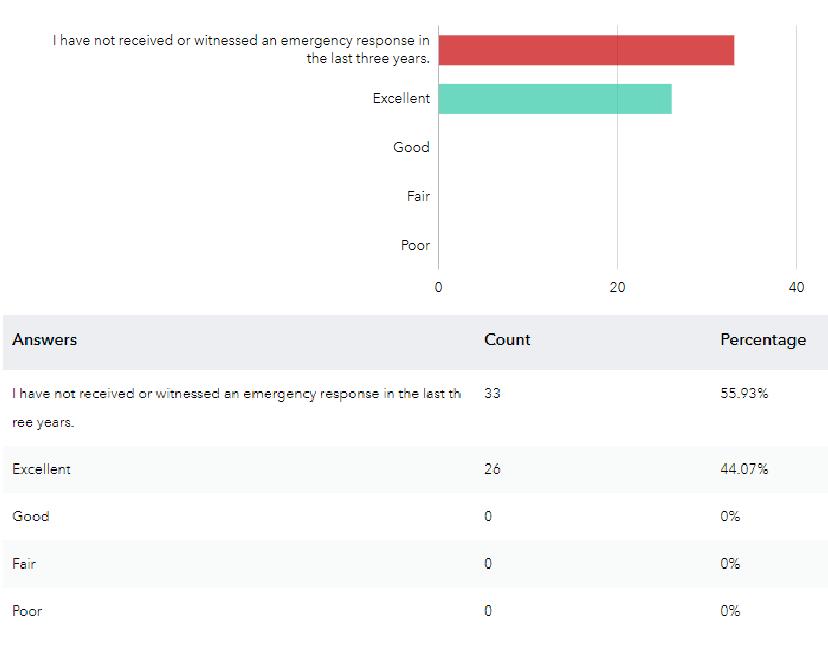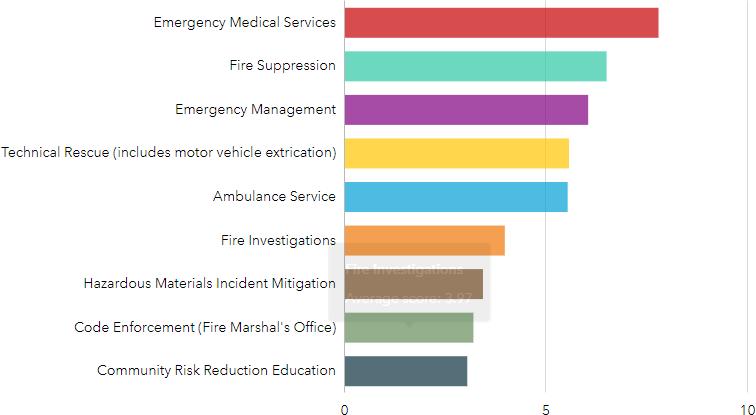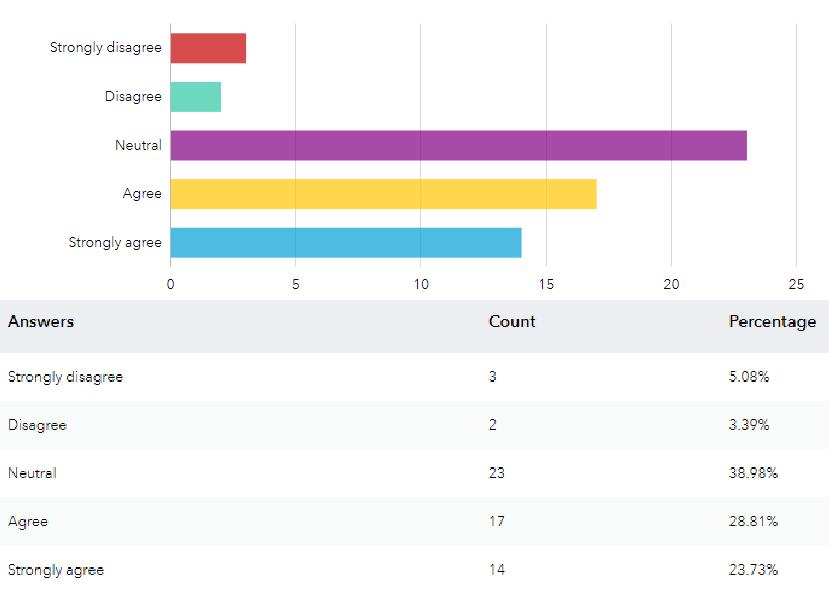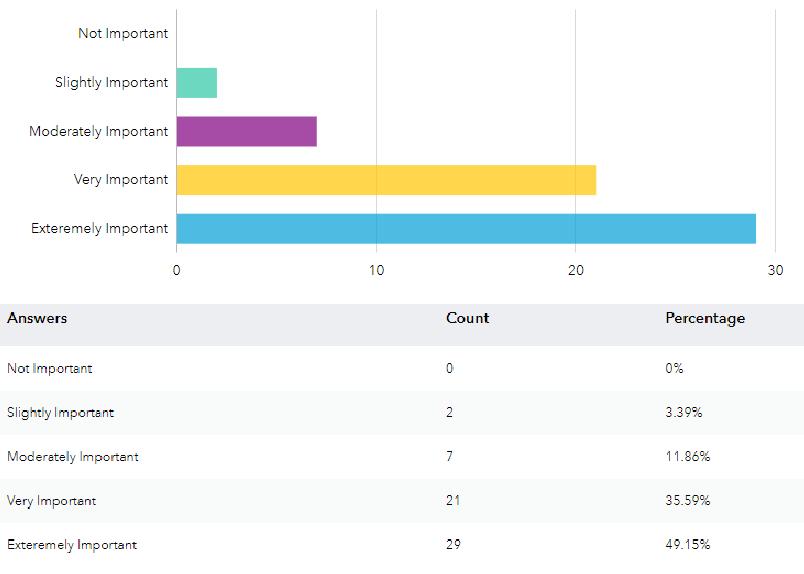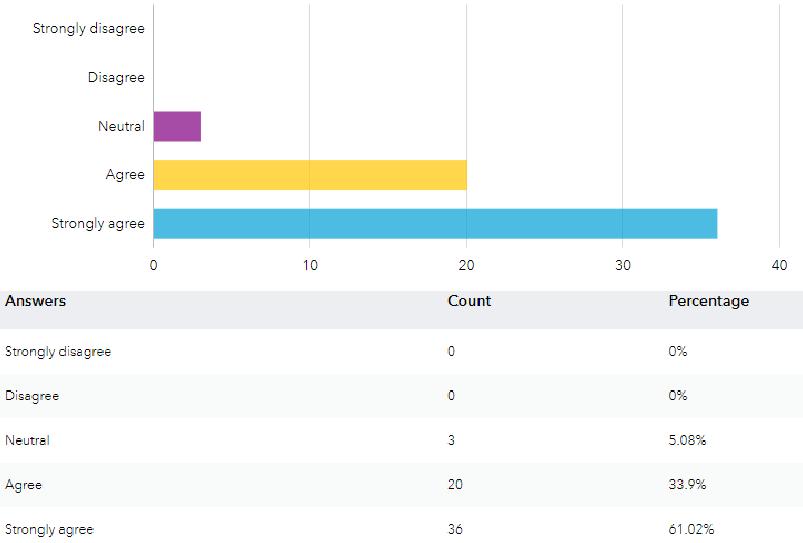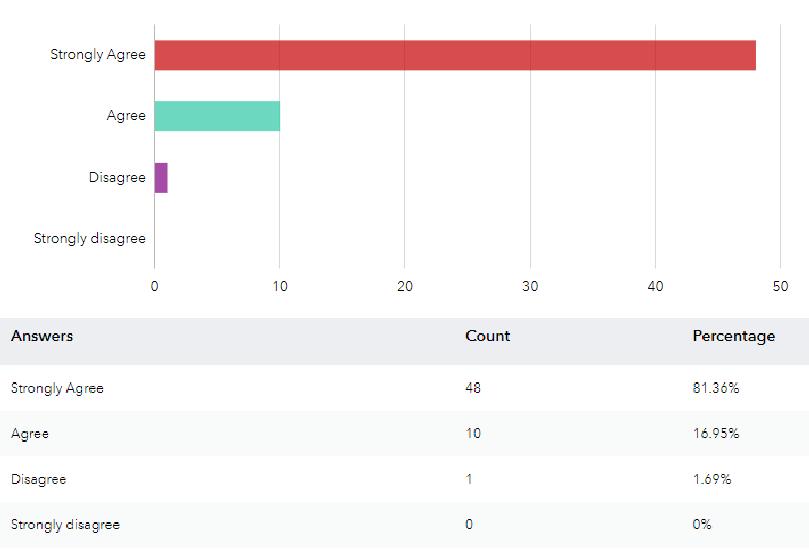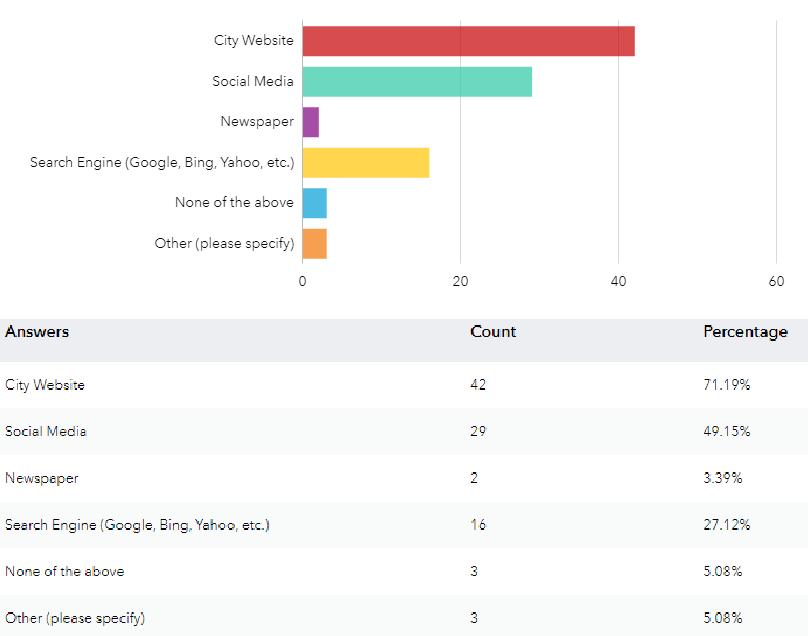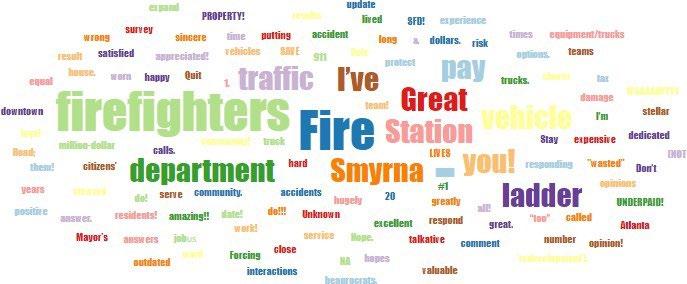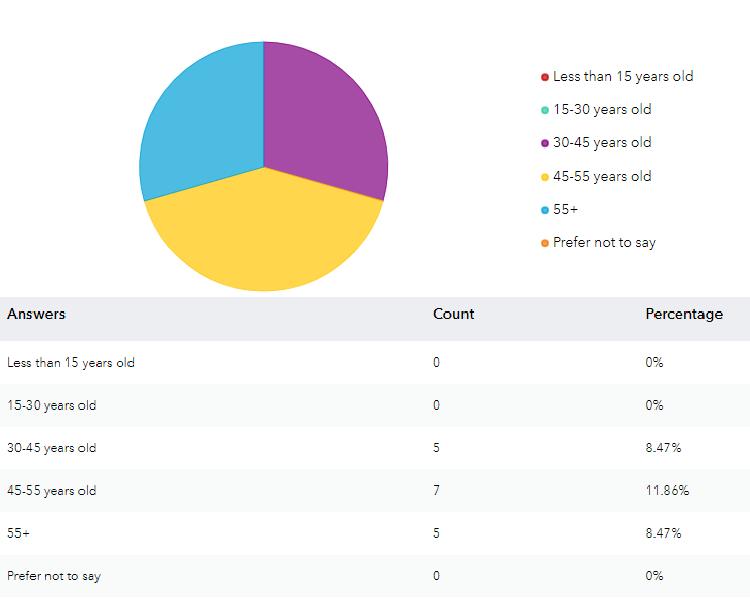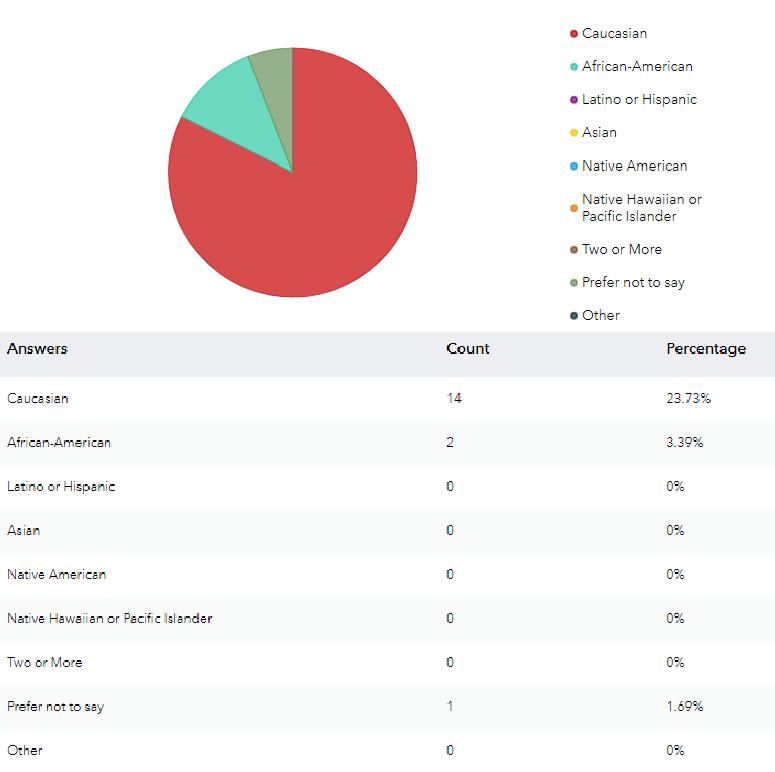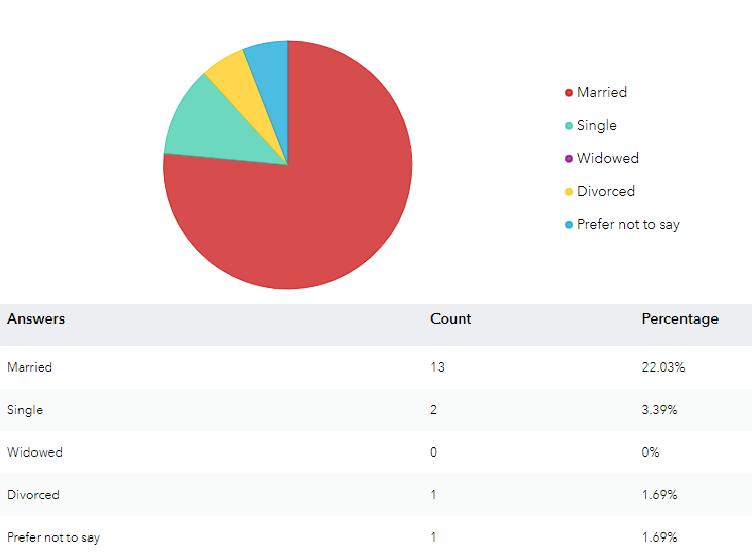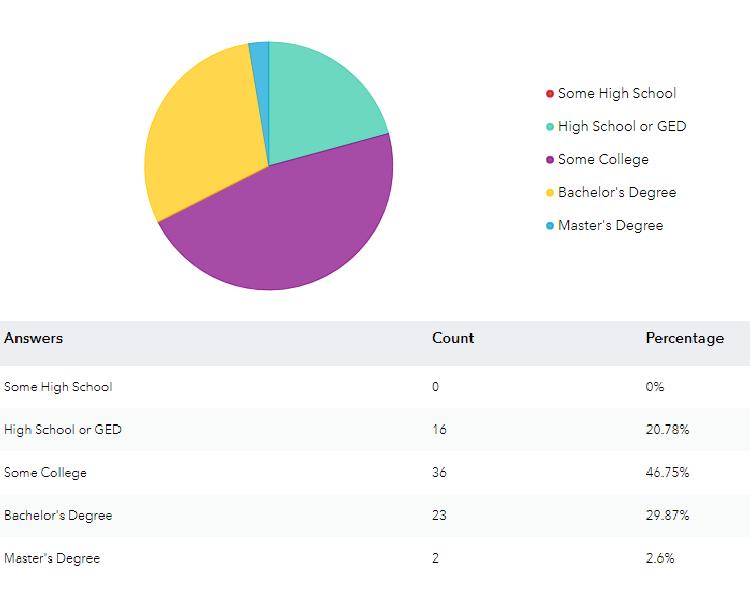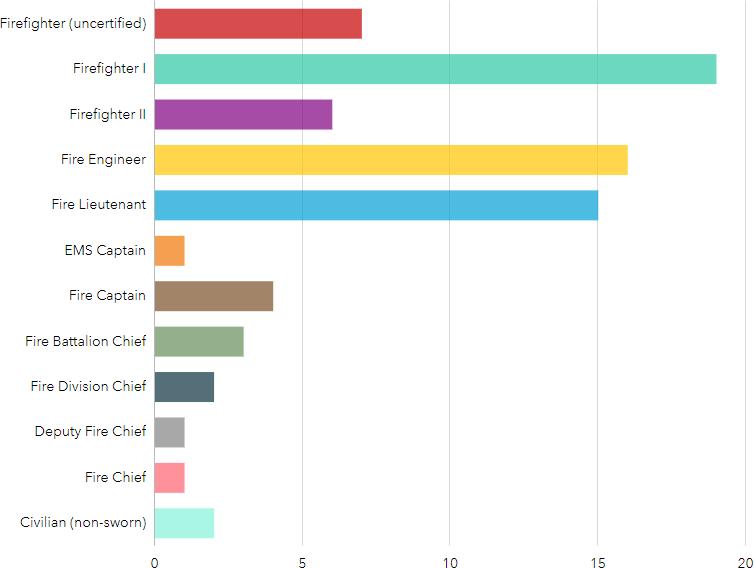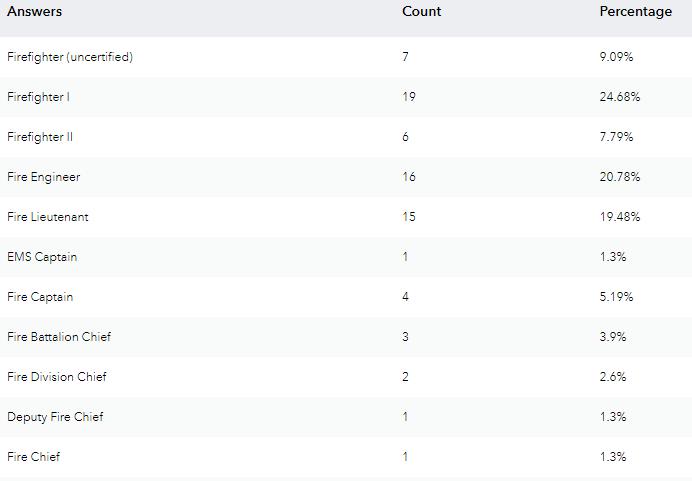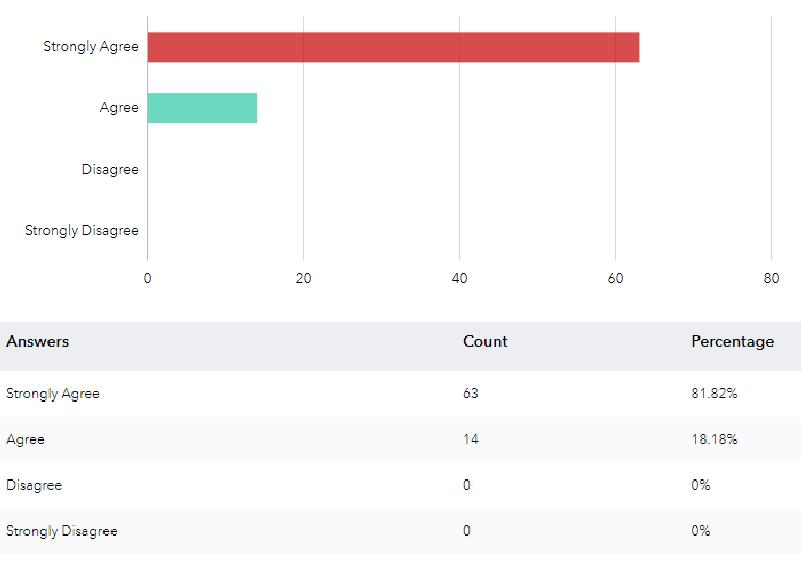







To the Citizens, Elected Officials, and Stakeholders of Smyrna:
It is my privilege to present the Community Risk Assessment and Standards of Cover (CRA/SOC) for the City of Smyrna. This document represents more than an evaluation of risks and resources it is a roadmap for how we protect our community today and prepare for tomorrow.
Fire and emergency services are built on trust, accountability, and the responsibility to serve with excellence. The CRA/SOC provides a comprehensive analysis of the hazards, demographics, and service demands that shape our community. It aligns those findings with the deployment models, staffing, and performance benchmarks necessary to deliver effective, reliable, and equitable emergency response.
This report was developed in alignment with the 10th Edition of the Commission on Fire Accreditation International (CFAI®) model, a nationally recognized framework that ensures our department measures itself against the highest standards of professional practice. By adopting this model, we demonstrate our commitment to continuous improvement, transparency, and responsible stewardship of public resources.
The findings of the CRA/SOC highlight both the strengths of our current service delivery and the opportunities before us. Population growth, changing land-use patterns, and increasing service demands present challenges that require strategic investment in people, facilities, apparatus, and technology. At the same time, this report reinforces the importance of proactive community risk reduction initiatives, interagency collaboration, and a relentless focus on training and preparedness.
I want to acknowledge the dedication of the men and women of the Smyrna Fire Department who carry out our mission every day with professionalism and courage. I also extend my gratitude to our elected officials, city leadership, and community partners for their ongoing support and collaboration.
Together, we will continue to build a safe, resilient, and thriving community. The CRA/SOC provides the framework to guide our decisions, ensuring we remain ready to protect lives, safeguard property, and serve with integrity.
Respectfully,
Brian L. Marcos Fire Chief – Emergency Management Director Smyrna Fire Department

Acknowledgements
The Smyrna Fire Department would like to thank the elected and appointed officials of the City of Smyrna, the Smyrna Fire Department, and specifically, the members of the City of Smyrna Community. The City of Smyrna Community Risk Assessment: Standards of Cover was only possible with their cooperation and support.
Introduction
The Community Risk Assessment and Standards of Cover (CRA/SOC) serves as a comprehensive evaluation of the risks, hazards, and service demands faced by our community, while outlining the resources, strategies, and standards required to provide effective fire and emergency services. This document is prepared in alignment with the 10th Edition of the Commission on Fire Accreditation International (CFAI) model, which establishes a nationally recognized framework for assessing community risk, aligning resources, and ensuring the effective and equitable delivery of fire and emergency services.
The CRA component identifies, analyzes, and prioritizes risks within the jurisdiction, ranging from fire and life safety hazards to natural disasters, hazardous materials incidents, and other special hazards unique to our community. The SOC component complements this analysis by evaluating deployment models, staffing, and performance benchmarks to ensure the department’s resources are positioned to meet those risks effectively. Together, the CRA and SOC provide a holistic, data-driven, and community-focused approach to risk reduction and service delivery.
Executive Summary
The CRA/SOC identifies existing and emerging risks, evaluates community demographics and growth trends, and analyzes historical incident data to establish a comprehensive risk profile. These findings guide the development of performance standards, response models, and deployment strategies that align with NFPA 1710/1720, CFAI accreditation standards, and local community expectations.
Key Findings
Community Profile: Population growth, demographic changes, and land-use patterns are contributing to increased service demands, particularly in high-density residential and commercial developments.
Risk Analysis: Risks identified include structure fires, medical emergencies, hazardous materials incidents, natural disasters, and special events requiring specialized response capabilities.

Service Demand: Call volumes continue to trend upward, with medical responses comprising most incidents. Concurrent call analysis highlights pressures on resource availability during peak demand periods.
Response Performance: Current travel times and effective response force deployment are evaluated against established benchmarks, revealing opportunities to enhance reliability through strategic station placement, apparatus deployment, and staffing adjustments.
Standards of Cover
The SOC defines the performance objectives and deployment strategies required to align service delivery with community risk, including:
• Baseline and benchmark performance measures for response time, reliability, and effective response force.
• Deployment models for fire suppression, EMS, technical rescue, and hazardous materials response.
• Strategies for continuous improvement through data-driven planning, training, and interagency collaboration.
Strategic Implications
The CRA/SOC underscores the importance of maintaining adequate staffing, apparatus, facilities, and technology to ensure the department can meet identified risks effectively. Recommendations include targeted investment in station distribution, apparatus replacement, personnel development, and community risk reduction initiatives aimed at reducing call volume and improving community outcomes.
Conclusion
This Community Risk Assessment and Standards of Cover represents a forward-looking framework that balances community expectations, fiscal realities, and public safety needs. By integrating the 10th Edition CFAI model with local data and stakeholder priorities, the department is positioned to deliver reliable, effective, and equitable emergency services that safeguard lives, property, and community vitality.

Description of Community Served
Community and Department Legal Basis

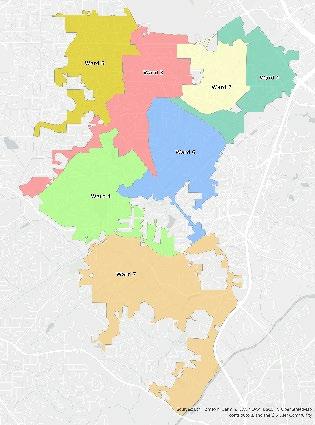
The City of Smyrna was incorporated as a municipality in the State of Georgia on August 23, 1872. Smyrna operates under a Mayor and Council form of government. A seven-member Council governs the City of Smyrna, each representing 1 of 7 wards and a mayor elected at large. The Mayor and Council members are elected to four-year terms, and the governing body appoints a City Administrator to serve as the Chief Administrative Officer of the City of Smyrna.
The incorporated City of Smyrna receives authority under the City of Smyrna Code of Ordinances article I, section 2- Incorporation; it states that corporate powers generally, “the Mayor and Council of the City of Smyrna, shall enact through and by the Mayor and Council of said City of Smyrna such ordinances, rules, regulations, and resolutions for the welfare and proper government of said city and for the transaction of business of said city as such Mayor and Council of said city may deem good and proper, consistent with the constitution and laws of the State of Georgia and of the United States.”
In division I, section 57. (a) (7) of the Code of Ordinances, “the Mayor and Council are authorized and empowered to enact any rule, ordinance, or regulation,” including “to organize and equip a fire department either paid or volunteer, and to adopt such rules and regulations as will best promote said department.”
History of the Community
Smyrna, Georgia, was settled by pioneers in the early 1800s and underwent several name changes before finally being recognized as Smyrna in 1872. The area was once equally divided between the State of Georgia and the Cherokee Indians. However, a settlement was reached in 1831 that deeded all the land to the State of Georgia.

Shortly after, settlers began drifting into this area, and a campground was permanently established in 1832 where members of all denominations could worship. This religious encampment drew its name from the Biblical

City of Smyrna and soon became the center of the social and spiritual life of the surrounding area. From this campground, the Methodist Church was organized in 1838.
The railroad significantly influenced Smyrna’s development, starting in 1836. By completion in 1842, the railroad had started Smyrna on its change from a frontier village to a growing community. Smyrna’s first brick building was erected in 1850 and was initially built as a boys’ academy.
The region was not without its share of strife during the Civil War, with two battles waged in its vicinity and the City’s businesses, homes, and covered bridge being destroyed by Sherman’s troops.
The City was incorporated in 1872, and the first city election was held in 1873. Smyrna had the first female mayor elected in the State of Georgia, Lorena Pruitt, in 1946.
Following World War II, population and commercial development were mainly due to the Bell Bomber plant, located near Smyrna, playing a critical role in catalyzing the City’s population expansion by the B-29 Superfortress, a World War II bomber aircraft. Furthermore, the plant was reopened as a Lockheed facility in 1951 and continues to operate today.
Community Financial Basis

In FY26, a total of $8.6 million was budgeted for Fire Services & Emergency Management. Fire Department operations are primarily funded through the City's General Fund The availability of these funds depends on the assessment and collection of various taxes, including sales tax, ad valorem tax, and special assessments. Property tax assessments account for 38% of the City's total revenue, with additional funding derived from charges for services, licenses and permits, intergovernmental agreements, fines and forfeitures, and special revenue sources.

Each fiscal year, the City designates a portion of its revenue for capital projects and vehicle replacements. In FY26, $3.9 million was allocated for capital expenditures. Additionally, if approved by voters, the City of Smyrna receives funding from Cobb County’s Special Purpose Local Option Sales Tax (SPLOST). For the Smyrna Fire Department, SPLOST funding is primarily used for significant acquisitions, reducing reliance on the Capital Improvement Purchases (CIP) budget and easing the financial burden on Smyrna taxpayers. This funding supports major projects, such as fire station construction or renovation, apparatus purchases, self-contained breathing apparatus replacement, and other critical capital investments.
Community Boundaries
Smyrna, a city situated approximately 10 miles northwest of Atlanta in Cobb County, boasts a population of over 59,000 residents and has experienced rapid growth in recent years. This bustling metropolis earned the 44th spot on Money Magazine’s “The Best Places to Live in America” survey in 2018, thanks to its affordability, high quality of life, and thriving economy. Spanning over 16 square miles, Smyrna is a dynamic locale featuring a varied blend of residential, commercial, and industrial areas, with the most prominent residential zones. This vibrant City is home to approximately 26,000 households of diverse sizes and ages.
Planning Areas/Zones
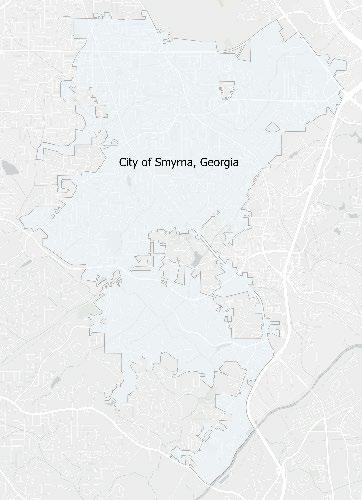
The Smyrna Fire Department’s adopted methodology for establishing planning zones follows primary fire department response areas or station districts. Planning Zones are then used to analyze the area covered for potential risk.
Planning Zone 1 is a general area covering 4.2 mi2 in the NorthCentral part of the city. This area has a total population of 16,345 and a population density of 3,889 mi2. Planning Zone 1 covers approximately 75.3 miles of roadway.



[PZ3] Planning Zone 3 (Fire Station #3)
[PZ2] Planning Zone 2 (Fire Station #2)
Planning Zone 2 is an area covering 4 mi2 in the Western side of the city. This area has a total population of 12,389 and a population density of 3,097 mi2. Planning Zone 2 covers approximately 60.5 miles of roadway.
Planning Zone 3 is a general area covering 2.4 mi2 of densely populated Eastern Smyrna. This area has a total population of 15,269 and a population density of 6,393 mi2. Planning Zone 3 covers approximately 46.6 miles of roadway.
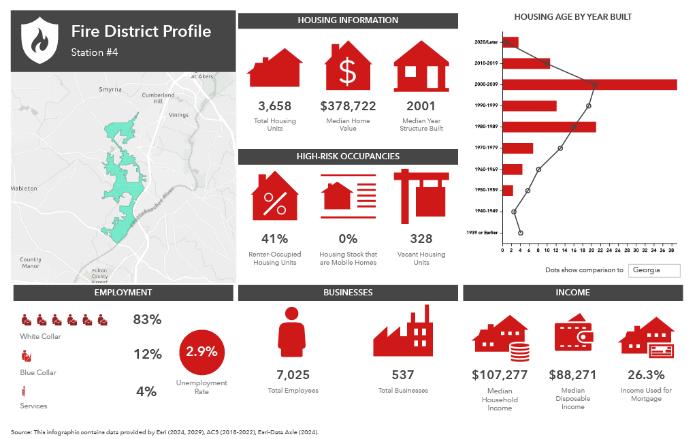

[PZ4] Planning Zone 4 (Fire Station #4)
Planning Zone 4 is a 2.8 mi2 area covering a long, narrow part of Southeastern Smyrna. This area has a total population of 8,862 and a population density of 3,042 mi2. Planning Zone 4 covers approximately 34 3 miles of roadway.


[PZ5] Planning Zone 5 (Fire Station #5)
Planning Zone 5 is a 2.8 mi2 area bordering the City of Mableton in the southwest corner of Smyrna. This area has a total population of 6,648 and a population density of 2,411 mi2. Planning Zone 5 covers approximately 31.3 miles of roadway.
Transportation Systems
Roads
The Smyrna service area includes U.S. Highway 41 and State Highway 280. Smyrna also has a network of local roads that serve residential and commercial areas. Some of the major roads in the city include Atlanta Road, Windy Hill Road, Concord Road, Spring Road, and the East West Connector.
Community Transportation Systems
CobbLinc is Cobb County, GA’s public bus transit system, providing service to Smyrna residents. Public bus systems offer numerous benefits for individuals and communities, making them an essential part of urban infrastructure. By providing efficient and reliable transportation options, CobbLinc reduces traffic congestion on local roads, meaning less gridlock, reduced travel times, and fewer accidents involving motor vehicles. fewer car accidents.




CobbLinc also improves access to jobs, education, and healthcare for people who may not have access to a car or cannot afford to operate one. Community transportation systems are also known to improve mobility for seniors, people with disabilities, and low-income families.
It is important to note that local routes are subject to impact from significant emergencies such as natural disasters, terrorist attacks, and/or pandemics. Additionally, CobbLinc does not provide service on certain holidays.


Critical Infrastructure
Utilities
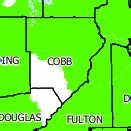
Power
The City of Smyrna is served by two major railroads: CSX Transportation and Norfolk Southern.
CSX Transportation - CSX operates the Western & Atlantic (W&A) Subdivision, a key freight corridor running from Chattanooga, Tennessee, through Marietta, and into downtown Atlanta. This line passes directly through Smyrna.
Norfolk Southern – While Norfolk Southern does not have a mainline running directly through Smyrna, its tracks cross CSX’s W&A Subdivision in downtown Atlanta. This intersection allows for interchanges and connections between the two major railroads, facilitating the transfer of goods and enhancing the region's rail network efficiency.
Natural Gas
Natural gas infrastructure within the city is maintained by Atlanta Gas Light. Atlanta Gas Light distributes gas to all service meters within the city limits. Consumers are then able to purchase gas from a natural gas marketer.
There are two electrical service providers that distribute power throughout Smyrna. The map provides an overview of the general locations of electrical substations present within the municipal boundaries.



Water
Residents of Smyrna get water provided by the Cobb County-Marietta Water Authority. Water provided by the City of Smyrna originates from two sources (water treatment plants); the Quarles Plant (Chattahoochee River) and the Wyckoff Plant (Lake Allatoona).
There are a few areas that are served by Cobb County directly. In 2020, Croy Engineering completed a comprehensive study of the City’s water system which provided the data necessary to develop a verified and calibrated water model. This allows the model to mimic the water system and provide information such as available flow, pressure, velocity, fire flow, and much more. In 2023, the city strategically deployed 15 pressure monitoring devices throughout the system to monitor system integrity.
Petroleum
There are two major petroleum product pipelines: Colonial Pipeline and Plantation Pipeline as well as one pumping station within the city.
Colonial Pipeline
Colonial Pipeline is a significant refined petroleum product pipeline system that operates in Georgia. It runs from Baton Rouge, Louisiana, to Washington, D.C., covering approximately 3,100 miles. Colonial Pipeline has a major tank farm located in Metro Atlanta (Austell, GA.) This facility plays a crucial role in supplying fuel to the region.
Plantation Pipeline

Plantation Pipeline is another key refined petroleum product pipeline system that operates in Georgia. The pipeline transports refined products to various states, including Georgia, and serves major metropolitan markets such as Atlanta


Smyrna Community Center Smyrna Library
Key Government Facilities
Aline Wolf Senior Center
884 Church Street
Smyrna, GA 30080
Adult Recreation Facility
Brawner Hall
3180 Atlanta Road
Smyrna, GA 30080
Community Development, GIS, Information
Technology, Fire Marshal, City Marshal, Parks and Recreation Facility
Smyrna City Hall
2800 King Street
Smyrna, GA 30080
Finance, Administration, Court Services, Human Resources, Utility Billing, City Council Chambers
Smyrna Police Department
1250 Powder Springs Street 100 Village Green Circle 911-Communications
Smyrna, GA 30080
Smyrna, GA 30080
Parks and Recreation Multi-Use Library Services
Smyrna Public Works
2190 Atlanta Road
Smyrna, GA 30080
2646 Atlanta Road
Law Enforcement, City Jail, Facility
Police & Fire Communications
Engineering, Building Maintenance, Fleet Management, Sanitation, Stormwater, Street Department

Smyrna Area Schools
Smyrna has one public high school, three area middle schools, and seven area elementary schools. Campbell High School serves 3,263 students and has an overall performance that is higher than 57% of schools in the state and is lower than its district. Its students' academic growth is higher than 33% of schools in the state and lower than its district. Its four-year graduation rate is 87.0%, which is higher than 45% of high schools in the state and similar to its district.
54.4% of graduates are college and career ready. Campbell High School’s graduation rate is approximately 89% as of 2025.
Hospitals and Emergency Departments

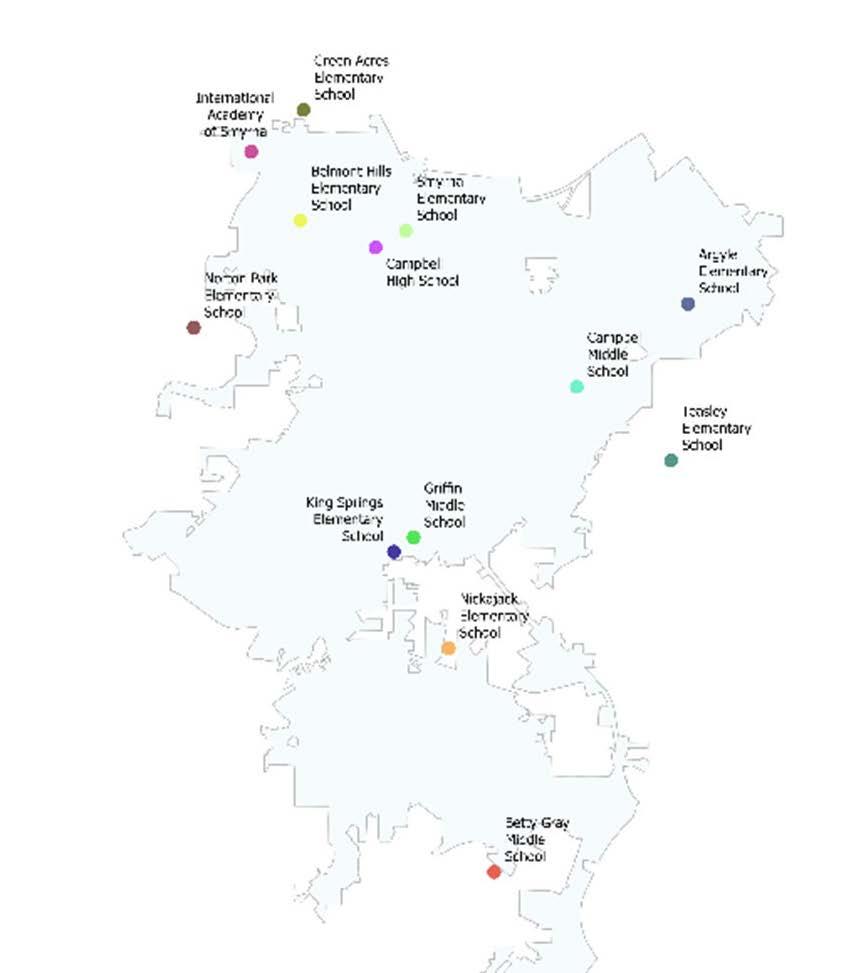

Hospitals, emergency treatment centers, and clinics are essential to the City of Smyrna, just like any city or town in the United States. Emergency treatment locations provide vital healthcare services to residents of Smyrna, including emergency care, minor surgeries, and specialized medical treatment. Treatment centers are staffed by highly trained healthcare professionals with lifesaving equipment making the facilities critical to the City. While there are no hospitals with an emergency department located in the City of Smyrna, Wellstar Kennestone and Wellstar Cobb are both less than ten miles from the city.
Senior Care Facilities
Smyrna is home to a growing population of older adults, supported by multiple senior care, assisted living, memory care, and skilled nursing facilities located throughout the city. These facilities provide essential housing and medical services for some of the community’s most vulnerable residents.

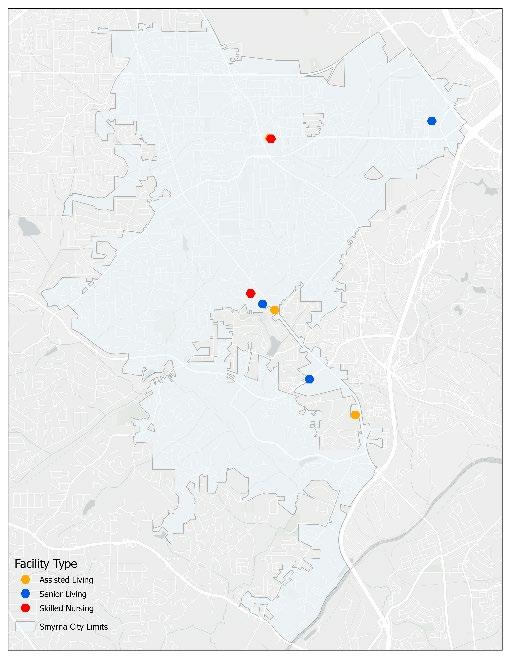
From a fire and emergency services perspective, senior care facilities represent a high-risk environment due to factors such as reduced mobility, increased medical needs, and higher occupant densities. Emergency incidents in these occupancies whether medical emergencies, fires, or evacuation scenarios often require a larger effective response force, specialized equipment, and coordinated action to ensure life safety.
As Smyrna’s population continues to age and demand for senior living options expands, these facilities will remain a critical focus of community risk reduction efforts, fire prevention inspections, and emergency response planning. Ensuring strong partnerships with facility administrators, ongoing training, and pre-incident planning is vital to maintaining safety for both residents and staff.
Historic Buildings
Historic buildings provide the community with sentimental attachment or historical significance. Although these buildings may not represent a traditional risk, losing one or more of these structures could negatively impact the community. Most of the homes are in “Williams Park.” The Williams Park neighborhood in Smyrna, Georgia, holds significant historical value as the city's oldest residential area, reflecting its development from the late 19th century to the early 20th century.
Historic Homes
Name
Gautschy House

Whitfield-Nelson House 2730 Gilbert Street
B.F. Reed House 2751 Nelson Lane
Vinson-Crawford House 1335 Roswell Street
Queen Anne Cottage 1423 Spring Street
Craftsman Bungalow 1469 Roswell Street
Hamby House 1312 Roswell Street
Daniell House 2635 Gilbert Street
Whitfield-Hood House 2720 Gilbert Street
Osburn House 1486 Spring Street
Suttles House 1496 Spring Street
Stanback House 1510 Spring Street Pace House
Roswell Street Walker House 1351 Roswell Street Chaffin House 1371 Roswell Street
Terrell House 1389 Roswell Street
Hargrove House 1460 Roswell Street

Historic Churches
Name Address
Smyrna First Baptist 1275 Church Street
First United Methodist Church 1315 Concord Road
Mt. Zion Baptist Church 2642 Hawthorne Avenue
St. Benedict’s Episcopal Church 2160 Cooper Lake Road
Second Baptist Church 2698 Atlanta Road
Spring Street Baptist Church 1464 Spring Street
Smyrna Christian Church 940 Concord Road
Tillman United Methodist Church 940 Concord Road
Vinings First Baptist Church 4182 S. Cobb Drive
St. Thomas the Apostle Catholic Church 4300 King Springs Road
Ararat Church 4336 King Springs Road
Kings Chapel AME Church 2600 Davenport Street
Greater Zion Hill Baptist Church 2010 Village Parkway
Major Community Events
Jonquil City Jog - The Jonquil City Jog is held every April on a Saturday and features a 5K, 1-mile, and a Tot Trot race. The race occurs in front of Smyrna City Hall in downtown Smyrna. As one of the best community races in Metro Atlanta, the Jonquil City Jog consistently draws a great crowd for this flat, fast, and family-friendly course.
Spring Jonquil Festival - The festival is located around City Hall. Streets in front of and behind City Hall are closed, and a large parking lot behind City Hall hosts booths in a portion of the lower lot. The Smyrna Spring Jonquil Festival features over 150 Arts & Crafts booths, 12 food booths, an entertainment stage, and various children's activities. The Jonquils will bloom in springtime in Smyrna. The event includes an interactive children's area with inflatable activities, sand art, and more.
Food Truck Tuesdays - The Smyrna Food Truck Tuesdays are held each Tuesday from May 2 through September 26 at Taylor-Brawner Park from 5:00 p.m. until 9:00 p.m. Each week a gathering of quality mobile gourmet trucks with live music.
Memorial Day Ceremony - Every Memorial Day, a distinguished Veteran is invited to speak on the importance of Memorial Day. The event is held at the Veterans Memorial next to City Hall.
June Concert – Held in downtown Smyrna from 7:00 pm until 10:00 pm, a live concert is held featuring various genres of music.

July Concert – Held in downtown Smyrna from 7:00 pm until 10:00 pm, a live concert is held featuring various genres of music.
Taste of Smyrna – In September, the downtown Smyrna Taste of Smyrna event features food, music, and fun. A wide selection of foods from over 30 restaurants, kid's activities, and entertainment are available.
Hispanic Heritage Celebration - Smyrna’s Hispanic Heritage Celebration engages and celebrates Hispanic Heritage Month with fun activities for the whole family. The event takes place at Village Green Park in downtown Smyrna.
Smyrna Spookfest Trails & More – Featured is an enchanted trail walk and haunted scares for the whole family with an evening of tricks and treats.
Crafts and Drafts – Held in downtown Smyrna, the Fall Festival hosts "Crafts & Drafts," football on big screens, 150 arts & crafts booths, 12 food booths, and plenty of children’s activities.
Smyrna Birthday Celebration – Held on Atlanta Road, this birthday celebration includes an all-day festival with food vendors, street performers, and three concert stages that conclude with evening fireworks.
Halloween Costume Contest - The Smyrna Police Department hosts a costume contest on the steps of the Veterans Memorial near City Hall at the Fall Festival. Law enforcement representatives are on hand to answer questions that you might have about Trick 'r Treating safely.
College Football Saturday - The Smyrna Market Village by Atkins Park hosts an LED screen broadcasting live college football! Also available are games, music, and prizes for the whole family.
Veteran’s Day Ceremony - The Veterans Memorial (next to City Hall) features a Keynote Speaker and remembers prior and current United States military veterans.
Coming Home for the Holidays - In downtown around City Hall, a kick-off celebration for the holiday season is held with tree lighting, Santa, and a giant Christmas Tree. Also available are music and a Christmas Carole singalong.
Smyrna Handmade Holiday Market – Hosted at the Brawner Hall and Reed House, the Smyrna Handmade Holiday Market is held in December.
Santa House - The Santa House at the Taylor-Brawner House allows families to take a picture with Santa.
Smyrna Bright Nights: A Community Celebration - Smyrna Bright Nights features an interactive map highlighting homes with light displays around Smyrna.

Land Use and Zoning

The zoning ordinance for the City of Smyrna regulates the location, height, and size of buildings and other structures, the size of yards and other open spaces, the density and distribution of population, the uses of land, buildings and structures for trade, industry, residence, recreation, public activities or other purposes. The ordinance also establishes districts and boundaries for each purpose. Amendments to the zoning ordinance must be reviewed by the Planning and Zoning Board before a recommendation is made to the Mayor and City Council for consideration. Annexed parcels are designated as the zoning district classification which is most like and consistent with the Cobb County zoning district classification applying to the property at the time of its annexation. The City’s Comprehensive Plan provides statistics and analysis necessary to estimate the City’s future needs and guides stakeholders with long-range planning initiatives. The Comprehensive Plan’s data is analyzed to support the goals and policies for land use transportation, natural resources, housing, and economic development. The official zoning map demonstrates the boundaries of the City of Smyrna, along with the 26 districts defined in the ordinance.
Topography
For the purposes of this section, the geographical coordinates of Smyrna are 33.884 deg latitude, -84.514 deg longitude, and 1,056 ft elevation.
The topography within 2 miles of Smyrna contains only modest variations in elevation, with a maximum elevation change of 210 feet and an average elevation above sea level of 1,004 feet. Within 10 miles contains only modest variations in elevation (1,089 feet). Within 50 miles contains very significant variations in elevation (2,753 feet).
The area within 2 miles of Smyrna is covered by artificial surfaces (96%), within 10 miles by artificial surfaces (76%) and trees (19%), and within 50 miles by trees (57%) and artificial surfaces (27%).



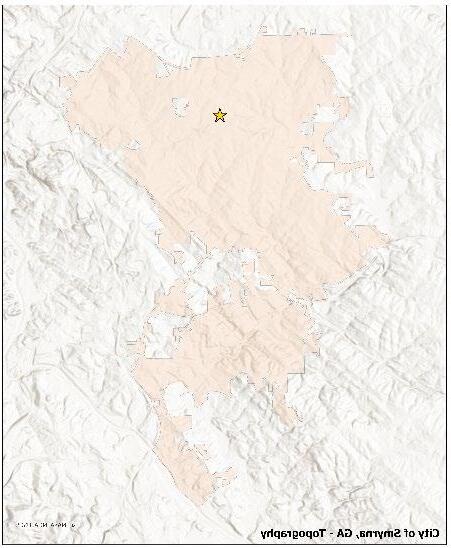
Geography


Smyrna is an integral part of the Atlanta metropolitan area, situated approximately one-mile northwest of the city limits of Atlanta. The downtown area of Smyrna is located around 16 miles away from the downtown area of Atlanta. Notably, Smyrna is positioned west of the intersection of I-285 and I75, which is situated in the northern region.
Geology
Northern Piedmont
The formations between the Allatoona Fault and the Brevard Fault zones are known as the Northern Piedmont. The Northern Piedmont of Georgia's major rock units comprise the New Georgia and Sandy Springs Groups. The New Georgia Group and Ashland Supergroup contain many metavolcanic rocks and similar ore deposits. The Sandy Springs Group was formed with major volcanic- bearing rock groups. This is based primarily on the fact that the New Georgia Group and Ashland Supergroup contain many metavolcanic rocks and similar types of ore deposits.


Flood events in the City of Smyrna are generally linked to special flood hazard areas identified on FEMA’s Flood Rate Insurance Maps (FIRMs). Within Smyrna, flood impacts tend to be scattered, occurring in small pockets across the city. One location that has experienced significant flooding from previous storm events is the Riverview Road area along the Chattahoochee River. Rising waters submerged the main roadway and affected a city park, as well as the parking lot of The Eddy at Riverview apartments.
Cimate
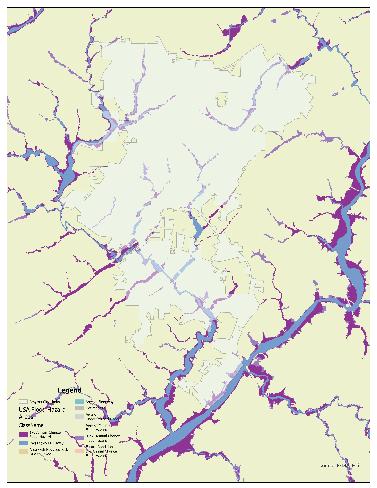


Smyrna experiences a climate marked by hot and muggy summers, short, cold, and wet winters, and partly cloudy skies throughout the year. The temperature typically ranges from 34°F to 89°F, with rare instances below 21°F or above 95°F. The humid period of the year spans 4.3 months, commencing from May 20 and extending until September 30.

During this time, the comfort level is often rated as muggy, oppressive, or even miserable at least 21% of the time. July has the most humid days in Smyrna, with 25.1 days that are muggy or worse. On the other hand, February is the month with the fewest humid days, with 0.0 days that are muggy or worse.
The amount of cloud cover in Smyrna varies throughout the year. The clearest period starts on July 17 and lasts for 4.2 months until November 24. October is the clearest month, with the sky being mostly clear or partly cloudy 66% of the time. However, the skies are generally cloudy from November 24 until July 17, lasting 7.8 months. January is the cloudiest month, with the sky being overcast or mostly cloudy 53% of the time.

The definition of a wet day in Smyrna is one with a minimum of 0.04 inches of precipitation. The probability of experiencing rain in Smyrna fluctuates throughout the year. The wet season spans 7.3 months, starting on January 21 and ending on August 29, with a likelihood of over 32% for any given day experiencing rain. The month with the highest frequency of rain in Smyrna is July, with an average of 13.1 days with at least 0.04 inches of precipitation. Conversely, the dry season lasts 4.7 months, beginning on August 29 and ending on January 21. The month with the least rainfall in Smyrna is October, with an average of 6.5 days with at least 0.04 inches of precipitation. Rain alone is the most common form of precipitation all year round, with the highest probability of 44% occurring on July 9.
Smyrna experiences rainfall throughout the year, with the highest precipitation occurring in February and the lowest in August. The city also experiences some variation in snowfall during the year, with the snowy period lasting for about a month from early January to early February. The month with the most snowfall is January, and the least amount of snow typically falls around July 21.

Smyrna's average hourly wind speed experiences mild seasonal variation over the year. The windier part of the year lasts 6.8 months, from October 19 to May 12, with average wind speeds of more than 5.3 miles per hour. March experiences the highest wind speeds in Smyrna, with an average hourly measurement of 6.6 miles per hour. Conversely, the period from May 12 to October 19 is known for its relatively calmer climate, lasting approximately 5.2 months. The month of August in Smyrna is noted for its calmness, recording an average hourly wind speed of 4.1 miles per hour.
Population

The Smyrna Fire Department serves a population of approximately 59,298 people, with the median age being 36 years old. There are 26,183 households in Smyrna, with the average family size being 2.3 people. Known as the Jonquil City for the thousands of jonquils that flourish in early spring, Smyrna has grown significantly in population over the past ten years. The population has increased from 52,600 in 2013 to 59,298 in 2024 and is expected to reach 59,700 people in 2029. This anticipated growth over the next four years is partly due to Smyrna’s proximity to the City of Atlanta and its charming, welcoming, and diverse residential neighborhoods.
Population Density
Understanding the City of Smyrna’s population density is essential to classifying risk. Population density can affect the number and severity of public safety responses. In most municipalities, the more densely inhabited an area, the higher the fire risk and demand for emergency services. Areas of higher fire risk typically require more emergency personnel and specialty apparatus to mitigate emergencies or hazardous conditions effectively and efficiently. Furthermore, areas with higher incident activity require additional response units to ensure a reliable response to the high service area. A neighborhood, district, or ward in Smyrna with a high population density can anticipate a high level of risk that influences staffing and deployment considerations.
Currently, Smyrna has a population density of 3,664 people per square mile compared to Cobb County, which has a population of approximately 760,00 people and a population density of 2,203 per square mile. The population density will most likely continue to grow as the population of Smyrna continues to rise over the next several years.

Demographic Features
Education
The City of Smyrna boasts a high school graduation rate of 93%, significantly higher than the State of Georgia graduation rate of 85% and slightly lower than the Cobb County high school graduation rate of 96.5%. Additionally, 55% of the residents of Smyrna hold Bachelor, Master, or Doctorate degrees. In contrast, 29% of the population in Georgia has at least a bachelor’s degree.
Income
The City of Smyrna has a median household income of $88,536 and a per capita income of $55,214. This income level is significantly higher than the State of Georgia’s median household income of $65,030 and per capita income of $34,516 but only slightly higher than the United States, which has a median household income of $69,028 and a per capita income of $37,638.
Individuals with Access and Functional Needs
Various factors can influence the need for emergency services in any community, including Smyrna. People with access and functional conditions may impede or interfere with their ability to access or receive assistance before, during, or after an emergency. The City of Smyrna and the Smyrna Fire Department should consider the following information when planning to provide community risk reduction outreach, education, and emergency response for the population.
Age
The age of the community served impacts the demands for services. Historically, as populations age, their need for emergency services increases. Older adults are more likely than the younger population to have chronic illnesses of functional limitations and physical sensory, and cognitive disabilities.
Between 2005 and 2015, the United States population 65 years and older increased by 30%, from 36.6 million to 47.8 million. This age group is expected to more than double to 98 million people by 2060. At the time of this report, 11% of the 55,380 people living within Smyrna are 65 and older.
Children
Children are highly vulnerable to emergencies. Emergencies can happen without warning, especially when children separate from their parents or caregivers. Children’s emergencies typically require more resources and various services must be involved after the crisis. First responders are often the first point of contact with children

during emergencies that could be considered traumatic and have long-lasting detrimental effects on responders. The population of Smyrna under 18 is 30%, with 7.7% under five years old. This data should be considered by the Smyrna Fire Department when planning community risk reduction methodologies and developing budgets to support outreach.
Older Adults
Nationally, efforts to reduce the number of fire deaths of children under five have been successful. However, unfortunately, there has been very little change in the death toll of older adults. Several key factors contribute to the older adult fire death toll, including the increasing age of the population overall, older adults increasingly living alone, the increase in disabilities with age, and the tendency for older adults to live in older homes. Knowing that over 6,000 citizens in Smyrna are over 65 years of age allows for targeted outreach and education in the community.
Studies from the National Fire Protection Association indicate that older adults are twice as likely to be injured by fire as the rest of the population. Seniors represent 40% of all fire-related deaths in the United States. Factors contributing to this data include mobility, cognitive confusion, and sight and hearing deficiencies.
People with Disabilities
Disabilities can relate to physical mobility and sensory, intellectual, developmental, cognitive, or mental challenges. An individual with a disability, as defined by the Americans with Disabilities Act (ADA), is a person who:
• Has a physical or mental impairment that substantially limits one or more major life activities, or
• Has a history of a physical or mental impairment, or
• Others perceive to have such an impairment
The Federal Emergency Management Agency (FEMA) expanded the definition of disability to include “people with disabilities and others with access and functional needs.” This expanded definition of disability includes people who may or may not fall within the meaning of civil rights laws and encompasses cross-disability issues.
Emergencies can be potentially dangerous and deadly for everyone, but persons with disabilities and impairments face additional challenges. Persons with disabilities often have a challenging time identifying or escaping hazardous situations. Currently, the City of Smynra has 3,765 households with at least one person with a disability.

People with Limited English Proficiency
By itself, speaking a language other than English at home does not directly contribute to a higher risk of emergencies; however, if a person has difficulty speaking English, it may contribute to delays or complications during an emergency. According to the NFPA, language barriers, cultural differences, and inexperience with unfamiliar home technologies mark the challenges of helping newcomers live safely from the threat of fire in the home.
In Smyrna, most of the population speaks English. However, 518 residents report not speaking English, and an additional 1,801 do not speak English well. It is essential to ensure that the residents who cannot communicate well in English receive community risk reduction training and emergency management information in languages they can understand.
People with Limited Access to Financial Resources
Low-income residents typically utilize government services at higher rates than other economic brackets. Citizens living in poverty experience a greater risk of fire and medical emergencies due to their age and housing condition, inability to pay for routine medical care, lack of medical insurance, and general health conditions.
The lack of dependable transportation is often associated with poverty, leading to increased demand for local emergency services. Smyrna has 2,071 (8%) households below the poverty line as of 2023.
In the October 2018 edition of Health Briefs, a peer-reviewed publication supported by the Robert Wood Johnson Foundation, published “Culture of Health.” The article highlighted a strong link between health and income. The key findings were significant morbidity disparities between the lower and upper-income brackets in the United States, leading to gaps in life expectancy of as much as 15 years for men and 10 years for women. The publication stated, “Poor health also contributes to reduced income, creating a negative feedback loop sometimes referred to as the health-poverty trap.”
Geographically, the highest concentration of households below the poverty level in Smyrna is located on the northern side of the City. Currently, stations one and three have the districts with the highest percentage of households below the poverty line.
Households with Limited Access to Transportation
“People with limited access to transportation” refers to people who do not have a personal vehicle. Reasons residents may not have access to transportation include age, disability, temporary injury, income, legal

restrictions, or access to a private vehicle. This group relies on public transport for work, school, worship, and leisure.
Within Smyrna, 819 households do not have personal vehicles. These citizens depend on public transit and will likely need transportation assistance in an emergency where treatment is required. Considering the transportation needs of the whole community during widespread evacuations, the transportation system may become overwhelmed quickly. Plans should be developed, and transportation systems should be prepared ahead of time, including considering the accessibility and availability of different types of transportation.
Best practices for transportation assistance include using community-based organizations to identify transportation-dependent populations, conducting regular drills for the evacuation of transportation-dependent people, and equipping a public information officer with answers to transportation and evacuation questions well before an emergency.
Planning Zone Assessment
Planning Zone 1

Station #1’s fire district serves a population of 16,345 residents with a high density of 3,888.7 people per square mile and a modest projected annual growth rate of 0.36% through 2029. The community is relatively diverse, with 49% White, 25% Black/African American, 5% Asian, 1% American Indian/Alaska Native, and 10% identifying as other races. About 10% of residents are age 65 or older, 15% of households include at least one person with a disability, and 10% of households are below the poverty level highlighting important at-risk populations. The area is also highly educated, with 56% of residents holding a bachelor’s degree or higher, 25% having some college education, 13% holding a high school diploma, and only 6% lacking a high school diploma. The age distribution shows a strong concentration of adults between 25 and 54 years old, particularly in the 30–39 range, with smaller proportions of children and older adults compared to Georgia overall. This demographic profile reflects a dense, well-educated, and diverse community with a sizable working-age population and key vulnerable groups that merit consideration in emergency planning.

Planning Zone 2
Station #2’s fire district serves a population of 12,389 residents with a population density of 3,097.1 people per square mile and a stable projected annual growth rate of 0.0% through 2029. The community is moderately diverse, with 53% White, 25% Black/African American, 5% Asian, 1% American Indian/Alaska Native, and 6% identifying as other races. Approximately 12% of the population is age 65 or older, 18% of households include at least one person with a disability, and 4% of households are below the poverty level, indicating some vulnerable groups within the district. Educational attainment is relatively high, with 56% of residents holding a bachelor’s degree or higher, 24% having some college education, 16% holding a high school diploma, and only 4% lacking a high school diploma. The age distribution shows a strong concentration of adults between 25 and 54 years old, particularly within the 30–44 age range, while younger and older populations are smaller compared to Georgia averages. Overall, this district reflects a dense, well-educated, and diverse working-age community with targeted pockets of vulnerability to consider in emergency response planning.
Planning Zone 3



Station #3’s fire district serves a population of 15,269 residents with a very high population density of 6,393.6 people per square mile and a notable projected annual growth rate of 1.80% through 2029. The community is highly diverse, with 33% White, 38% Black/African American, 9% Asian, 1% American Indian/Alaska Native, and 9% identifying as other races. About 8% of residents are age 65 or older, 13% of
households include at least one person with a disability, and 9% of households are below the poverty level, representing key at-risk populations. Educational attainment is strong, with 56% of residents holding a bachelor’s degree or higher, 27% having some college education, 13% holding a high school diploma, and only 3% lacking a high school diploma. The age distribution shows a large concentration of adults in the 25–39 age range, with fewer older adults compared to state averages, reflecting a young, working-age population. Overall, this district represents a dense, rapidly growing, and highly diverse community with a well-educated workforce and select vulnerable groups that warrant attention in emergency planning.
Planning Zone 4
Station #4’s fire district serves a population of 8,612 residents with a population density of 3,042.1 people per square mile and a modest projected annual growth rate of 0.48% through 2029. The community is racially diverse, with 36% White, 46% Black/African American, 7% Asian, and 3% identifying as other races. About 12% of residents are age 65 or older, 18% of households include at least one person with a disability, and 6% of households are below the poverty level, representing notable at-risk groups. Educational attainment is high, with 61% of residents holding a bachelor’s degree or higher, 24% having some college education, 11% holding a high school diploma, and only 4% lacking a high school diploma. The age distribution shows a strong concentration of adults between 25 and 54 years old, with smaller proportions of both youth and seniors compared to Georgia overall. This reflects a relatively dense, well-educated, and diverse working-age community with a few key vulnerable populations to consider in emergency planning.
Planning Zone 5

Station #5’s fire district serves a population of 6,648 residents with a population density of 2,411.0 people per square mile and a modest projected annual growth rate of 0.19% through 2029. The community is moderately diverse, with 51% White, 32% Black/African American, 6% Asian, and 3% identifying as other races. About 15% of residents are age 65 or older, 19% of households include at least one person with a disability, and only 2% of households are below the poverty level, indicating lower economic vulnerability than other districts.


Educational attainment is notably high, with 69% of residents holding a bachelor’s degree or higher, 20% having some college education, 7% holding a high school diploma, and only 3% lacking a high school diploma. The age distribution shows a strong concentration of adults between 25 and 59 years old, with comparatively fewer children and a slightly higher proportion of older adults. Overall, this district reflects a lower-density, highly educated, and relatively affluent working-age community with a small but important population of seniors and households with disabilities to consider in emergency planning.

History of the Smyrna Fire Department
Legal Establishment of the Fire Department

Major Historical Milestones

1899
In division I, section 57. (a) (7) of the Code of Ordinances, “the Mayor and Council are authorized and empowered to enact any rule, ordinance, or regulation,” including “to organize and equip a fire department either paid or volunteer, and to adopt such rules and regulations as will best promote said department.”
The earliest records referring to a “Fire Brigade” in Smyrna date back to 1889, when the Fire Brigade was credited with battling a cotton warehouse fire in downtown Smyrna. Later, records reveal several attempts to organize a volunteer fire Department with various degrees of success.

1953
In 1953, the city purchased its very first “new” fire truck in anticipation of providing a “regular” or paid fire Department.


1954
The Smyrna Fire Department opened its doors as a career/volunteer Department on May 4th, 1954. The new Department responded to its first call on May 5th and held an open house on May 15th to show off the new combination Fire/Police station.

1973
The Department would continue operating as a combination Department until August of 1973 when the cadre of volunteers responded to their last call, and the Department transformed into a fully paid organization.

1987
Rescue operations would continue to be performed by the local Civil Defense until it was finally disbanded on May 9th, 1987. The Fire Department then assumed rescue operations and emergency medical response duties.

2022-2025
Today, the Department has grown to five stations that house three engine companies, two truck companies, two rescue units, and one battalion chief vehicle. To date, the Smyrna Fire Department has responded to over 7,000 calls. It provides the citizens of Smyrna with the highest level of pre-hospital care. In 2022, the Department transitioned Fire Chiefs with Chief Acree's retirement and Chief Marcos's appointment. The City of Smyrna also celebrated its 150th birthday, which showed a collaboration of public safety and City departments. In 2023, a second Deputy Fire Chief position was added and a new ladder truck was purchased to enhance the fire suppression capabilities of the department.
Current Legal Boundary of Service Area
The Smyrna Fire Department provides services to residents within the City of Smyrna. As the City’s municipal boundaries change over time through annexation and growth, the fire department must keep pace with the changing demands of the community.

Current Organization, Divisions, Programs and Services
Office of the Fire Chief
The Office of the Fire Chief provides overarching leadership and strategic direction for the Smyrna Fire Department. This office consists of the Fire Chief, the Deputy Chief of Emergency Services, and the Deputy Chief of Administrative Services. Collectively, this executive team bears full responsibility for ensuring that the department fulfills its mission of safeguarding life, property, and community well-being through comprehensive fire and emergency services.
The Fire Chief serves as the Chief Executive Officer of the department, accountable to the City’s governing body and community stakeholders for the performance, readiness, and integrity of the organization. The Deputy Chief of Emergency Services is entrusted with operational oversight of emergency response, training, and emergency management programs, ensuring that service delivery meets or exceeds established standards and benchmarks. The Deputy Chief of Administrative Services directs prevention, support services, and administrative functions, thereby sustaining compliance with regulatory mandates, managing fiscal and physical resources, and advancing community risk reduction initiatives.
Together, the Office of the Fire Chief establishes the strategic vision, maintains organizational accountability, and cultivates a culture of professionalism, continuous improvement, and service excellence. This office ensures that all divisions are aligned with nationally recognized standards, municipal priorities, and the evolving needs of the community.
Deputy Chief of Emergency Services
The Deputy Fire Chief of Emergency Services is responsible for the day-to-day operations of the Response, Training, and Emergency Management. This role also serves as the Deputy Director of Emergency Management
Response Division
The Response Division staffs the apparatus that responds to fire department assistance requests. The division staffs three shifts to ensure round-the-clock service to the community. A Battalion Chief commands each shift Firefighters work 24-hour shifts. Specific functions of the Response Division include Fire Suppression, Emergency Medical Services, Technical Rescue, Community Outreach, Hazardous Materials, and Risk Reduction.

Training Division
The Training Division manages, delivers, and documents the training of the Smyrna Fire Department personnel a Division Chief, Field Training Officer, and the EMS Director staff the division.
Emergency Management Division
The mission of the Emergency Management Division is to develop plans and procedures that provide an efficient and effective response to the threats facing the City of Smyrna. The Emergency Management Division has various agreements to strengthen the Smyrna Fire Department’s response capabilities. The Fire Chief is the EMA Director, and the Deputy Fire Chief of Emergency Services is the Deputy EMA Director. There is one additional full-time employee assigned to the Emergency Management Division, the EMA Specialist who also serves as the Public Information Officer (PIO).
Deputy Chief of Administrative Services
The Deputy Chief of Administrative Services oversees the Administrative (Support Services,) and Prevention Division. This role also serves the Fire Marshal.
Support Services
The Support Services manages the Smyrna Fire Department’s small equipment, fleet maintenance, and facilities.
Prevention Division
The Prevention Division protects life and property from fire, explosion, and other related hazards through plan review, fire and life safety inspections, code enforcement, and fire cause investigations. The Division is staffed by one Assistant Fire Marshal (Captain), three Deputy Fire Marshals (Lieutenant), and one Administrative Assistant.






Fire Suppression - Services related to extinguishing fires. Incidents involving building fires, vehicle fires, grass & woods fires, etc.
Emergency Medical Services (EMS) - Services related to medical emergencies which does not include ambulance service. Incidents involving heart attacks, strokes, diabetes, trauma & injuries, breathing problems, illnesses, etc.
Technical Rescue - Services related to highly technical rescue operations. Incidents involving victim extrications for motor vehicle accidents, trench rescue, high angle rescue, water rescue, below grade or confined space rescue, building collapse, etc. Limited Resource
Fire Marshal's Office (code enforcement) - Services related to preventing fires and enforcing life safety codes. Building inspections, building safety systems, sprinkler requirements & inspections, local ordinances, construction plan review, etc.
Community Risk Reduction Education - Services related to educating the public to lower community risks. Services provided by the Smyrna Fire Department such as training school age children in fire safety or similar training, fire extinguisher training, smoke alarms, adult senior safety training, CPR/First Aid, etc.
Emergency Management - The mission of the Emergency Management Division is to develop plans and procedures that provide an efficient and effective response to the threats facing the City of Smyrna. By developing and exercising our all-hazards plan, we strive to minimize the impacts of an emergency or disaster on our citizens, visitors, the environment, and the City's economy. The Emergency Management Division has various memoranda of understanding (MOU) and agreements in place to strengthen our response capabilities, and continues to develop additional agreements that enhance our working relationships with local, federal, and state partners. Smyrna is one of only two cities with their own Emergency Management Agency recognized by the State of Georgia.
Hazardous Materials Mitigation - Services related to identifying, preventing, stopping releases of hazardous materials into the community. Large fuel spills, chemical releases, etc. Hazard Identification.
Fire Investigations - Services related to investigating fire cause and origin. Incidents involving arson investigation, issuing of citations, enforcing outdoor burning regulations, etc.
Ambulance Service - Services related to transporting patients to hospitals. This service is not provided by the Smyrna Fire Department. All ambulance services within Smyrna (Cobb County) are private companies contracted by the county.

Fire Stations, Training Facilities, and Apparatus
Smyrna Fire Department Headquarters
The Smyrna Fire Department Headquarters is located on the first floor of Fire Station 1 located at 2620 Atlanta Road, providing a centralized hub for essential operations. The facility includes private office space for Executive Staff, Fire Training Division, Emergency Medical Services (EMS) Director, and administrative support staff. In addition to these offices, headquarters houses EMS central supply, a multi-purpose room for both public and departmental use, and dedicated meeting spaces.
Fire Prevention Division
The Fire Prevention Division (Fire Marshal’s Office) is located on the second floor of Brawner Hall located at 3180 Atlanta Road, across the hallway from the Community Development Office. The strategic location of this office space allows for quick interfacing while staff is working through the permitting process.
Emergency Operations Center
The Smyrna Emergency Management Emergency Operations Center (EOC) is located on the first floor of Fire Station 2 at 642 Concord Road. This designated facility functions as a command center, supporting large-scale emergency response efforts, overseeing pre-planned city events, and coordinating operations following natural disasters.
Support Services Annex
Station 4 houses the Support Services Annex which includes office and meeting space for the Administrative Services Division.
Support Services Annex – Central supply, Storage for uniforms, PPE and station supplies.

Fire Stations
Fire Station #1
Fire Station 1 is located at 2620 Atlanta Road. This facility was built in 1999 utilizing brick and mortar (Ordinary Type III) construction.


Fire Station 1 has a total maximum staffing capability of 10 personnel and offers various facilities and amenities. These include separate rooms with seven bedrooms and 10 beds, exercise/workout facilities, a commercial kitchen, individual lockers for storage, bathroom /shower facilities, and washer/dryer facilities. The station prioritizes safety and security with sprinklers, smoke detection, decontamination/biohazard disposal measures, and security systems equipped with cameras.

Overall, Fire Station 1 is a well-maintained and functional facility providing essential community services. With its good condition, proper facilities, and a strong team of personnel, the station is equipped to respond to emergencies and ensure the safety and well-being of its residents.

Fire Station #2
Fire Station 2 is located at 642 Concord Road. This facility was built in 2019 utilizing brick and mortar (Ordinary Type III) construction.
The station provides separate rooms, including five bedrooms with 10 beds, offering comfortable accommodation for the staff. The presence of exercise/workout facilities, a kitchen for meal preparation, and dedicated shower facilities contribute to the well-being and convenience of the personnel.


The facility has sprinklers and smoke detection systems, ensuring prompt fire detection and response. The presence of decontamination/biohazard disposal facilities underscores the station's commitment to addressing potential hazardous situations. Security measures, including surveillance cameras, further enhance the safety and security of the staff.

Fire Station 2 exhibits excellent design, code compliance, and construction. It provides well- equipped staff facilities, prioritizes safety and efficiency. Monitoring future viability factors will ensure that the station effectively meets the community's emergency service needs.

Fire Station #3
Fire Station 3, is located at 2825 Park Road. This facility was built in 2005 using brick and mortar (Ordinary Type III) construction.
The station has separate rooms, including five bedrooms with nine beds. The station also provides exercise/workout facilities, kitchen facilities, individually assigned lockers, bathroom facilities, training/meeting rooms, and washer/dryer facilities.


Safety and security measures are in place at Fire Station 3, including sprinklers and smoke detection systems to ensure the early detection and suppression of fires. Security systems, including cameras, maintain a secure environment for personnel and the facilities. The apparatus exhaust system is installed to minimize health risks associated with vehicle exhaust emissions.

Apparatus
Engine 3 2014 Pierce ArrowXT
3 Engine 17 2014 Pierce ArrowXT
Fire Station 3 is in good condition and continues to fulfill its role in serving the community and responding to emergencies. With its facilities, amenities, and safety measures in place, the station provides a functional and secure environment for firefighting personnel. Regular maintenance and attention to the structural and nonstructural aspects of the facility will be essential to ensure its longevity and effectiveness in meeting the needs of the community it serves.

Fire Station #4
Fire Station 4 is located at 4595 South Cobb Drive. This facility was built in 1996 using a combination of brick and mortar and wood frame construction (Ordinary Type III with type V construction on the wings).
The station offers separate rooms, including six bedrooms with eight beds. The station has exercise/workout facilities, kitchen facilities, individual lockers/storage assigned, shower facilities, training/meeting rooms, and washer/dryer facilities. These amenities contribute to the functionality and well-being of the personnel.



Safety and security measures are in place at Fire Station 4 to ensure a secure environment. The station is equipped with sprinklers and smoke detection systems, allowing for early detection and suppression of fires. Security systems, including cameras, maintain a secure environment for personnel and the facilities.
The provided facilities and amenities support the firefighting personnel's functionality and well-being. However, to ensure its continued effectiveness and longevity in serving the community, ongoing maintenance, and attention to the structural and non-structural aspects of the facility will be essential. As the oldest building in the department, Fire Station 4 is 35 years old. Modernizing the structure will require significant financial support over the next few years.

Fire Station #5
Fire Station 5 is located at 750 Cooper Lake Road. The facility was built in 2012 using brick and mortar (Ordinary Type III) construction.
The station offers separate rooms, including five bedrooms with nine beds. The station has exercise/workout facilities, kitchen facilities, individual lockers/storage assigned, shower facilities, training/meeting rooms, and washer/dryer facilities. These amenities contribute to the functionality and well-being of the personnel.
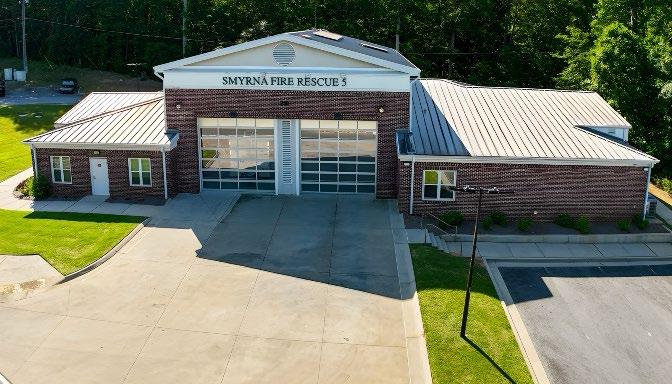

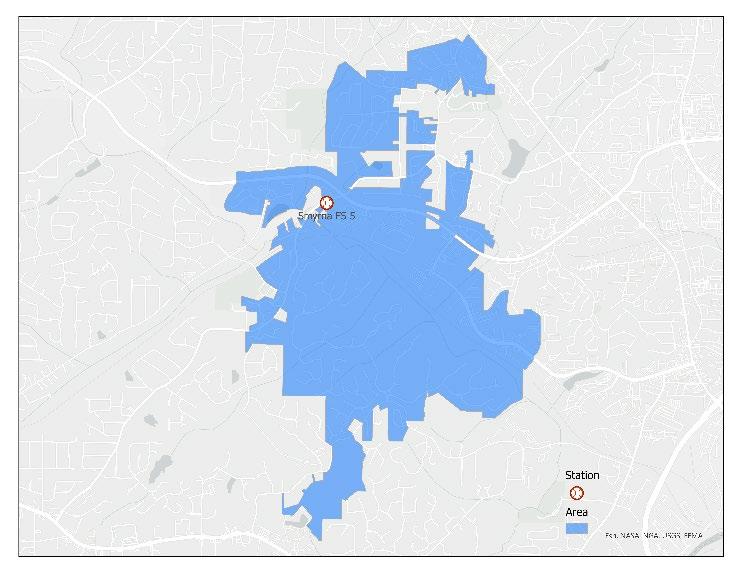
Overall, Fire Station 5 is in good condition and stands ready to serve the community and respond to emergencies. The well-maintained facilities and amenities supported the firefighting personnel's functionality and well-being. Regular maintenance and attention to the structural and non-structural aspects of the facility will be essential to ensure its continued effectiveness and longevity in meeting the needs of the community it serves.

Facility Evaluation
The Smyrna Fire Department used the following criteria to evaluate the Smyrna Fire Department's five fire stations and training facility:
Excellent
Good
Fair
Poor
This facility is in excellent condition with no visible structural defects and is clean and well-maintained. The design and layout of the interior are functional and free of any obstacles to the apparatus bays or offices. No significant defect history exists, and the building's design and construction match its intended purpose. Additionally, the building is typically less than 10 years old.
The building's exterior is in excellent condition with only a few or no damages. It has a clean and well-designed layout with minimal signs of wear and tear on the inside. The roof and apparatus apron function well and have no significant cracks or crumbling surfaces. Additionally, there are no visible patches or leaks on the roof. The building was specifically designed and constructed for its intended purpose. It is relatively new, with an age of less than 20 years.
Upon inspection, the building is in good structural condition with a weathered exterior and some minor to moderate non-structural issues. The interior has normal wear and tear but is well-organized, leading to the apparatus bay or offices. The mechanical systems are functional. However, the building design and construction may need to align with its intended use. While age-related maintenance has increased, there are no significant problems, and the building is typically over 30 years old.
Upon inspection, the building is in good structural condition with a weathered exterior and some minor to moderate non-structural issues. The interior has normal wear and tear but is well-organized, leading to the apparatus bay or offices. The mechanical systems are functional. However, the building design and construction may need to align with its intended use. While age-related maintenance has increased, there are no significant problems, and the building is typically over 30 years old.
Facility Improvements
Replacements and improvements are addressed through the annual budgeting process, which incorporates both operating and capital improvement funds, as well as S.P.L.O.S.T. project recommendations. All proposed projects are reviewed by the City Administrator’s Office prior to being presented to the Mayor and City Council for approval.
$650,000 was allocated in FY 2025 to fund several large renovation projects at Fire Station 1 and Fire Station 4.

Station 1
• Bathroom renovation
• Apparatus bay floor resurfacing and repaint walls
• Overhead door replacement with four-fold doors
Station 4
• Construction of an airlock between the apparatus bay and living quarters
• Replacement of the rear driveway
Fixed asset projects are also discussed and reviewed during the monthly city infrastructure meetings. During the meeting, interested city department representatives are able to provide feedback based on their area of expertise prior to starting the construction phase.
All new facilities and major renovations to existing facilities follow the same commercial building permit process as all other commercial projects in the city. This process ensures that all city maintain compliance with all applicable codes and standards.
Beginning in 2025, the city entered into an agreement with Georgia Power Company to manage upgrades in key facilities. Georgia Power Company provided several Energy Conservation Measures (ECMs) for different facilities across the city including the Fire Stations (FS). The scope of each ECM varies for each facility type.
For example:
ECM1 HVAC System Upgrades – Only old, inefficient HVAC units were replaced. Some Fire Stations, like FS1, already had newer systems, so no changes were made there.
ECM3 Interior Lighting LED Upgrades – Only outdated, non-LED lights were replaced. Existing LED lights were left as-is.
Below is a list of the ECMs provided across the city followed by a summary of the scope for each Fire Station.
• ECM1 HVAC Systems Upgrades
• ECM2 Duct Cleaning and Final TAB
• ECM3 Interior Lighting LED Upgrades
• ECM4 MCC, Generators & ATS

The following is a high-level summary of the ECMs scope for each Fire Station:
Fire Station 1:
• ECM1 - Existing HVAC units to remain, modify return air ductwork and restore airside economizer for AHU1 only, add GPS (Global Plasma System) ionization for 2-AHUs, replace water heater storage tank with high efficiency tankless water heaters, modify the controls system to reflect the changes.
• ECM2 - Clean building ductwork for 2-AHUs, 1-PIU, and 7-VAVs, and provide a final TAB (Test, Adjust, Balance) of the airside devices.
• ECM3- Existing LEDs to remain. LED retrofit for various cans, volumetric kits, tubes, and exterior wallpacks.
• ECM4- Replace existing diesel generator with a natural gas (NG) generator sized to serve the building electrical load including NG meter and fuel piping.
Fire Station 2:
• ECM1 - Existing HVAC units to remain, add GPS ionization for 2-AHUs, and 1-RTU.
• ECM2 - Clean building ductwork for 2-AHUs & 1-RTU and provide a final TAB of the airside devices.
• ECM3- Existing LEDs to remain, no new lighting.
• ECM4- Existing generator to remain. Retrofit existing Automatic Transfer Switch (ATS), relocate CTs to utility transformer, and install CT meter adjacent to utility transformer.
Fire Station 3:
• ECM1 – Replace 3-existing split HVAC systems including thermostats and add GPS ionization for 3AHUs.
• ECM2 - Clean building ductwork for 3-AHUs and provide a final TAB of the airside devices.
• ECM3- Existing LEDs to remain. LED retrofit for various cans, semi-circle kits, tubes, and exterior wallpacks.
• ECM4- Replace existing generator and ATS sized to serve building electrical load.
Fire Station 4:
• ECM1 - Existing HVAC unit to remain, replace 1-existing split HVAC system including thermostat and add GPS ionization for 2-AHUs.
• ECM2 - Clean building ductwork for 2-AHUs and provide a final TAB of the airside devices.

• ECM3- Existing LEDs to remain. LED retrofit for various cans, volumetric kits, tubes, and exterior wallpacks.
• ECM4- Replace existing generator and ATS sized to serve building electrical load.
Fire Station 5:
• ECM1 - Replace 4-existing split HVAC systems including thermostats and add GPS ionization for 4AHUs.
• ECM2 - Clean building ductwork for 4-AHUs and provide a final TAB of the airside devices.
• ECM3- Existing LEDs to remain. LED retrofit for various cans, volumetric kits, tubes, and exterior wallpacks.
• ECM4- Replace existing generator and ATS sized to serve building electrical load.

Apparatus & Vehicles
Fire Department vehicle replacements are financed through an Internal Service Fund, specifically the Vehicle Replacement Fund (VRF). Established in FY 2014, the VRF supports the planned replacement of vehicles and rolling equipment. The VRF is funded by operating transfers from both the General Fund and the Water/Sewer Fund. Replacement decisions are guided by criteria such as mileage, age, and life-to-date maintenance costs.
The City of Smyrna Budget Office maintains a 30-year replacement schedule, which is updated annually and adjusted as needed to reflect changing conditions. Final recommendations for replacement are incorporated into the annual budget proposal, with input provided by both the Fire Department and Fleet Maintenance to ensure accurate prioritization and fiscal responsibility
Emergency Response Apparatus
Reliable apparatus is an essential part of the overall mission of the Smyrna Fire Department. Historically, the life expectancy for a frontline apparatus is 10-15 years, depending on call volume and overall condition of the apparatus.
Smyrna Fire Department’s fleet condition ranges from fair to excellent condition The current age of the response fleet ranges from 1 to 16 years as compared to 4 to 24 years in early 2025
By averaging the frontline fleet, including the reserve apparatus, the average age of emergency response fire apparatus is 7.8 years. Most fire departments in the United States classify apparatus as either frontline or reserve.
Typically, frontline apparatus is more reliable and recently built for the organization. Frontline apparatus are the daily workhorse of the department. They are designed to respond to many emergencies and carry a wide array of equipment. Reserve apparatus is kept on the ready to allow for routine maintenance and repair of frontline apparatus. In some cases, reserve apparatus may be required to fill in for long periods when a frontline vehicle has experienced a significant accident or catastrophic equipment failure. Regardless of the reason for the reserve apparatus being placed in service, it must be capable of operating in the same scenarios as the vehicle it is replacing.
Below is the inventory of Smyrna Fire Department emergency response and reserve apparatus:


Supervisor, Command, and Staff Vehicles
The Smyrna Fire Department utilizes a fleet of support staff vehicles that are specifically outfitted to support administrative, logistics, emergency response, training, and inspection operations. Each vehicle is equipped with advanced communication tools including radios, computers, and other essential gear that enable personnel to remain connected and effectively coordinate activities.
In addition to command and training functions, several vehicles are designated for fire origin and cause investigations as well as fire and life safety inspections. These responsibilities often require transporting cameras, evidence collection kits, protective gear, ladders, shovels, and sometimes portable lighting.

As part of a broader safety initiative, the department began transitioning its fire prevention fleet to pickup trucks in 2021. Pickup trucks provide a safer and more practical option by allowing investigators to transport burned debris, evidence containers, and contaminated equipment in the truck bed, reducing the risk of exposure inside the cab.
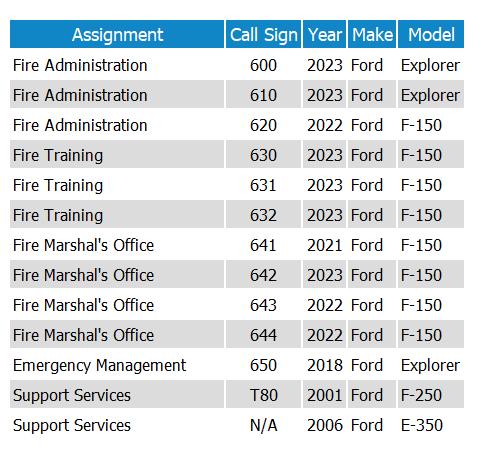
Supervisors and command vehicles are critical to the mission of the Smyrna Fire Department, serving as the connection between firefighters in the field and centralized management during major incidents or through the building inspection program. By systematically replacing aging frontline, administrative, training, and prevention vehicles, the department maintains its ability to effectively manage emergencies, coordinate personnel, and deliver essential fire prevention services ultimately protecting property and saving lives.
The table to the left provides an inventory of the Smyrna Fire Department’s support staff vehicles

Apparatus Replacement Methodology
The City’s current vehicle replacement methodology is based primarily on age and mileage. To ensure operational readiness, each vehicle replacement is reviewed during the annual budget planning cycle. In some cases, an early replacement or “upgrade” may be recommended.
Beginning in FY 2026, the Fire Department adopted a conceptual points-based model to support replacement recommendations presented to the Finance Committee, using NFPA 1900 as a guideline. This process assigns points by evaluating mileage, service history, vehicle condition, and overall reliability.
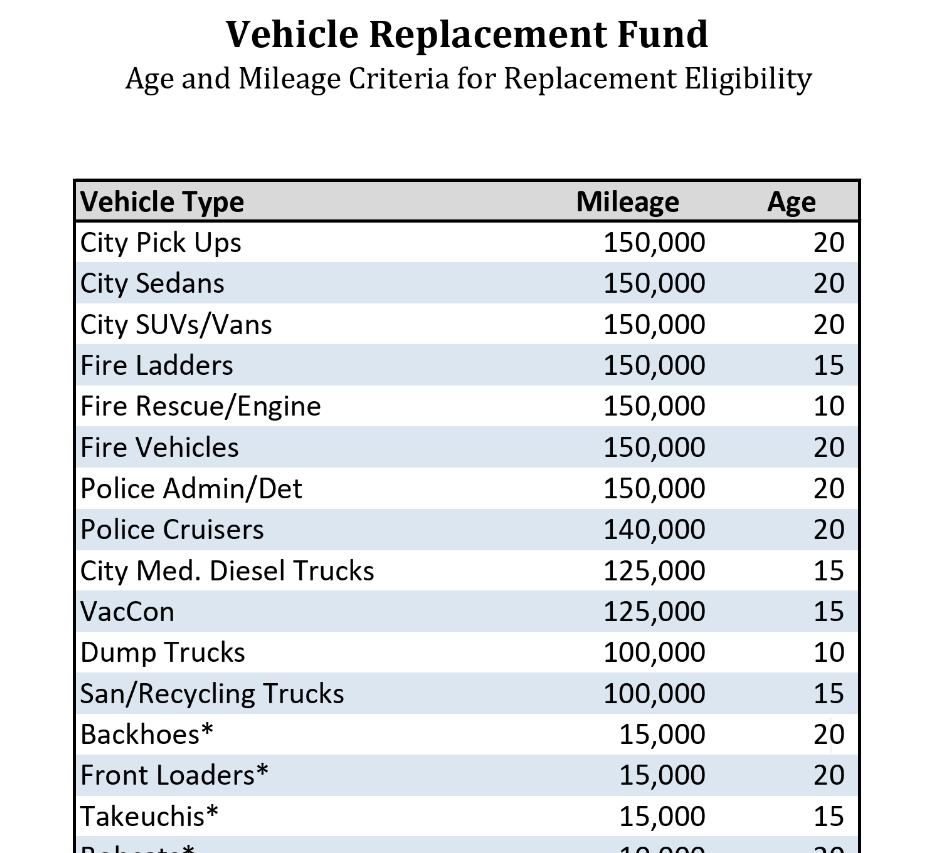
NFPA 1900 (2024) provides general recommendations and encourages agencies to consider multiple factors when determining the service life of fire apparatus. The service life considerations outlined below are adapted from
NFPA 1900 (2024):
• Vehicle road mileage
• Engine operating hours
• Replacement parts availability and supply chain reliability
• Quality of work from the original manufacturer
• Design and dependability of the department’s preventive maintenance program
• Value of components used during the apparatus build


The Smyrna Fire Department’s public safety vehicle replacement schedule can be found on page 77 of the approved FY 2026 Budget Book. This schedule positions the department to proactively replace both administrative and operational vehicles as needed.
For FY 2026, $1,750,000 has been allocated for the replacement of two vehicles. Looking ahead, from FY 2027 through FY 2030, an additional $3,600,000 has been programmed to continue the planned replacement of fire department vehicles.









TRUCK 4

RESCUE 4




RESERVE ENGINE 17

RESERVE TRUCK 16


Current Descriptions of Levels of Service with Delivery Programs
Fire Suppression
• ISO Class 2
Emergency Medical Services
• Advanced Life Support
Technical Rescue
• Limited capability
• Vehicle Extrication is most common type
Fire Marshal’s Office
• Plan Review
• Inspections
• Code Enforcement
• Fire Investigations
Community Risk Reduction Education
Emergency Management
• Independent agency recognized by the Georgia Department of Emergency Management & Homeland Security
Hazardous Materials Mitigation
• Limited capability
• Carbon Monoxide response is most common type
Fire Investigations
• Mandated peace officers
• State certified fire investigators
Ambulance Service
• Metro Atlanta Ambulance

Current Deployment and Coverage Areas
Points of Service Delivery
Fire Station #1
• Battalion Chief
• Aerial
• Rescue
Fire Station #2
• Pumper
Fire Station #3
• Pumper
Fire Station #4
• Aerial
• Rescue
Fire Station #5
• Pumper
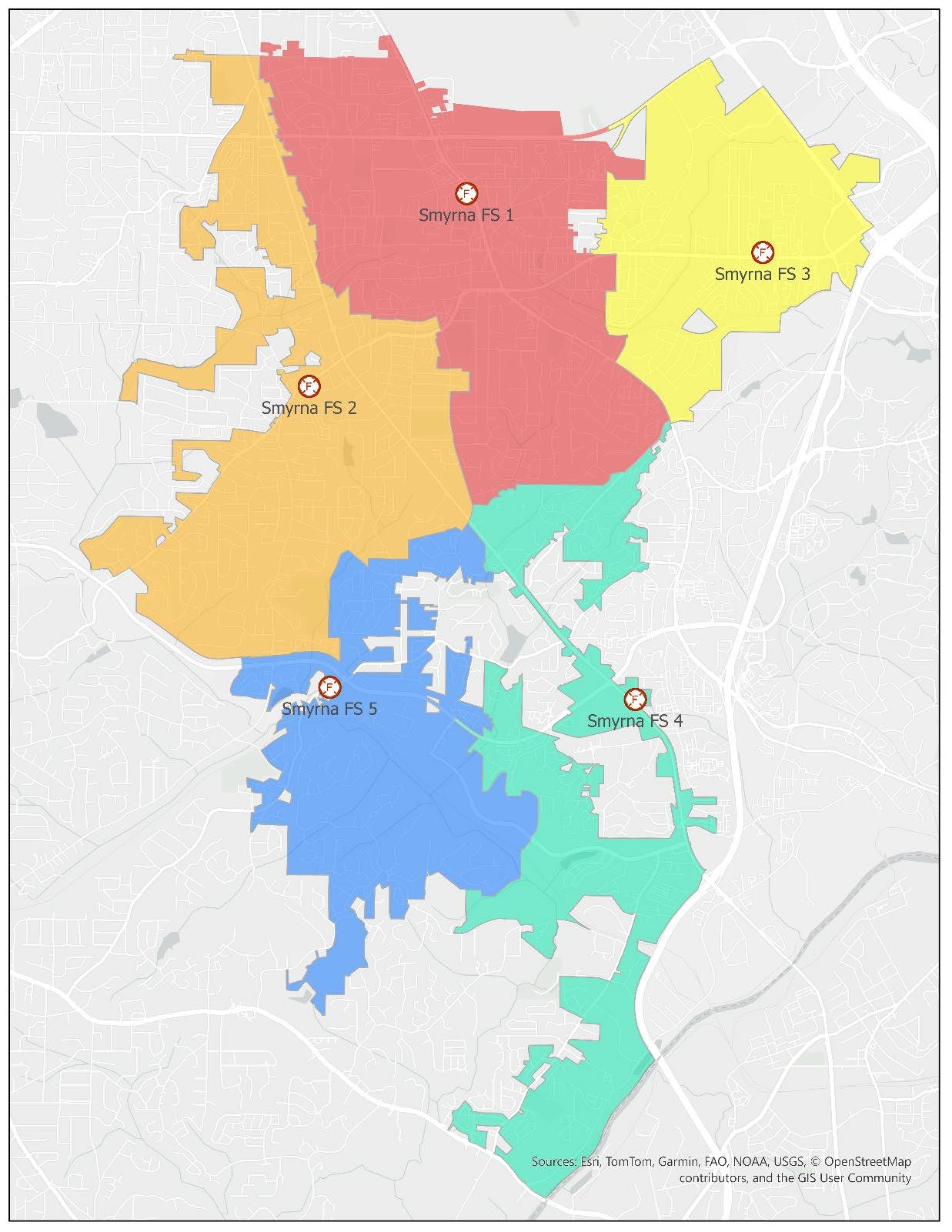
Response Areas
Fire station response areas were developed to provide a closest unit response to all areas of the City of Smyrna. Response areas are evaluated on an as needed basis as the city develops. Response areas were last adjusted in 2019.

Minimum Deployment Resources
Priority Description Nature Code
Respond Abdominal Pain ABDOM
Respond Accident Injury ACCI
Respond Accident With Injuries 41I
Respond Aircraft Crash 90
Respond Allergies / Envenomations ALLER
Respond Animal Bites and Attacks BITE
Respond Back Problems/Pain BACK
Respond Bomb Threat 89
Recommend Equipment to Send
Rescue or Engine/Truck, EMS
Rescue or Engine/Truck, EMS (No PD Call Spawned/Assist other agency)
Rescue or Engine/Truck, EMS (Depending on circumstances and severity of injuries or accident such as in roadway or smoke, fire, fluids, chemicals, etc…)
Zone Engine, Back Up Engine, Ladder Truck, Bat1, EMS
Rescue or Engine/Truck, EMS
Rescue or Engine/Truck, EMS
Rescue or Engine/Truck, EMS
Zone Engine/Truck
Respond Brush Fire 33B Zone Engine/Truck
Respond Burns / Scalds BURNS
Respond Car Unlock with Child 82C
Respond Carbon Monoxide Alarm 3CO
Respond Cardiac or Respiratory Arrest CARDIO or CPR
Respond Cave In CAVE
Respond Chest Pains CHEST
Respond Choking CHOKE
Respond Convulsions/Seizures SEIZE
Respond Diabetic Problems DIAB
Respond Difficulty Breathing BREATH or DIB
Respond Drowning DROWN
Respond Dumpster Fire DUMP

Rescue or Engine/Truck, EMS
Rescue or Engine/Truck
Zone Engine/Truck
Rescue or Engine/Truck, EMS
Zone Engine, Back Up Engine, Ladder Truck, Bat1, EMS
Rescue or Engine/Truck, EMS
Rescue or Engine/Truck, EMS
Rescue or Engine/Truck, EMS
Rescue or Engine/Truck, EMS
Rescue or Engine/Truck, EMS
Rescue or Engine/Truck, EMS
Zone Engine/Truck
Respond Electrocution
Respond Elevator Entrapment
Respond Entrapment Non-Vehicle
ELECTR or SHOCK
ELEV
ENTRAP
Respond Eye Problem or Injury EYE
Respond Falls
Respond Fire Alarm Commercial
Respond Fire Alarm High Rise
Respond Fire Alarm Residential
FALLS or FALL
Rescue or Engine/Truck, EMS
Zone Engine/Truck
Zone Engine/Truck
Rescue or Engine/Truck, EMS
Rescue or Engine/Truck, EMS
33AC/COMM Engine/Truck
33AH/HIGH RISE
33AR/RESD/RESID
Respond Headache HEAD
Respond Heart Problems HEART
Respond Heat or Cold Exposure
Respond Hemorrhages or Lacerations
Respond Hit & Run with Injuries
Respond Hostage or Barricade Situation
Respond Invalid Assist
Respond Investigation
Respond Maternity Call
Respond Medical
Respond Medical Alarm
Respond Natural Gas Leak
Respond Overdose, Poison by Ingestion
Respond Person Deceased
Respond Person Down
Respond Person Hit by Auto with Injury
Respond Person Injured

EXPO/HEAT/COLD
HEMO/LACER/LAC
43I
18/HOSTAG/BARRIC
ASSIST/INVALID
INV/INVEST
62/MATERN/BABY/OB
76/MEDIC/EMS
76A/MEDALR
92/GAS/GASLEA
OD/OVERDO/POISON
48/DECEASED/DEAD/DIED
67/PERDWN/DOWN/UNRESP
46I/PERHI
47/PERINJ/INJURY
Zone Engine, Back Up Engine, Ladder Truck, Bat1 (i.e. Any structure that is five (5) stories or taller)
Rescue or Engine/Truck
Rescue or Engine/Truck, EMS
Rescue or Engine/Truck, EMS
Rescue or Engine/Truck, EMS
Rescue or Engine/Truck, EMS
Rescue or Engine/Truck, EMS
Rescue or Engine/Truck, Bat1, EMS
Rescue or Engine/Truck
Zone Engine/Truck
Rescue or Engine/Truck, EMS
Rescue or Engine/Truck, EMS
Rescue or Engine/Truck, EMS
Zone Engine/Truck, Bat1 (notify gas company)
Rescue or Engine/Truck, EMS
Rescue or Engine/Truck, EMS
Rescue or Engine/Truck, EMS
Rescue or Engine/Truck, EMS
Rescue or Engine/Truck, EMS
Respond Person Shot
50/SHOT
Respond Person Stabbed 51/stab
Respond Sexual Assault with Injury 49I
Respond Stroke
Respond Structure Fire
Respond Suicide
STROKE/CVA
33S/STRUCT
53/SUIC
Respond Suicide Attempt 53A/SUICA
Rescue or Engine/Truck, EMS
Rescue or Engine/Truck, EMS
Rescue or Engine/Truck, EMS
Rescue or Engine/Truck, EMS
Zone Engine, Back Up Engine, Ladder Truck, Bat1, EMS
Rescue or Engine/Truck, EMS
Rescue or Engine/Truck, EMS
Respond Toxic Chemical Spill 91/TOXIC/HAZMAT/CHEMIC/SPILL Zone Engine/Truck, Bat1 (notify Chemtrec)
Respond Train Derailment
93/TRAIN
Respond Transfer Interfacility Palliative Care TRANS/HOSPIC/INTER/PALL/TIP
Respond Trouble Unknown 55
Respond Vehicle Fire 33V/VEHF/VEHFIR
Zone Engine/Truck, Backup Engine, Bat1, EMS
Rescue or Engine/Truck, EMS
Zone Engine/Truck
Zone Engine/Truck
Respond Wires Down 31/WIRES/WIRES DOWN Zone Engine/Truck

Community Response History
Purpose
The purpose statement for the Smyrna Fire Department is as follows:
We are an “all hazards” organization with a focus on community risk reduction and an exceptional readiness to respond to emergencies. We save lives. We protect property. We improve the quality of life in our community.
Vision
The vision statement for the Smyrna Fire Department is as follows:
To be recognized as a leader in community risk reduction, excel at developing our people, and build enduring partnerships.
Values
The Smyrna Fire Department Values are as follows:
• Integrity
• Service
• Accountability
• Community
• Commitment

The Smyrna Fire Department surveyed Community members and Fire Department employees online between May and July 2023. Information from both surveys was used to establish priorities and develop recommendations for the future delivery of Fire and Emergency Services by the Smyrna Fire Department.
Community Member Priorities
Community members were asked to prioritize nine fire department programs from most to least important. Emergency Medical Service was the top priority (7.78), followed by Fire Suppression (6.49). The community members rated Code Enforcement (3.19) and Community Risk Education (3.03) as the lowest priorities.

Community Service Expectations
A clear understanding of what our community expects with regard to service delivery is foundational in establishing goals and objectives to meet or exceed expectations. With this knowledge, adjusting or reinforcing internal priorities may be necessary to meet the community's needs. Listed below are the primary expectations of the community stakeholders. Their top two primary expectations were that the fire department arrive quickly to emergencies (9.29) and protect lives (8.80). The community members rated site visits / pre-incident planning (3.51) and environmental protection (3.17) as the lowest priorities.


The Community Survey established performance benchmarks later in this report based on community service needs and expectations. The complete Community Survey is included in this report as Appendix A.
Department Member Priorities
The results of the Fire Department Staff Survey were used to identify priorities related to working conditions and service delivery and to develop recommendations for the future delivery of fire and emergency services by the Smyrna Fire Department later in this report.
The complete Fire Department Employee Survey is included in Appendix B.

Performance Goals
The Smyrna Fire Department delivers a broad range of essential programs and services designed to protect lives, property, and the environment while enhancing the overall safety and resilience of our community. Each program fulfills a distinct mission within the department’s all-hazards service model, addressing both emergency response and risk reduction priorities.
To ensure these services are delivered effectively and efficiently, the department has established performance objectives for each program area. These objectives provide measurable benchmarks that support strategic planning, resource allocation, and continuous improvement in alignment with the Center for Public Safety Excellence (CPSE) accreditation model. They reflect the department’s commitment to operational excellence, accountability, and service quality for the citizens and visitors of Smyrna.
Program-Specific Performance Objectives
Fire Suppression
Objective: Maintain effective and efficient fire suppression operations to minimize loss of life, property, and environmental damage from fire incidents.
Performance Measures:
• Achieve first engine arrival on-scene within 7 minutes 30 seconds 90% of the time.
• Confine 80% of structure fires to the room of origin.
• Maintain a fireground injury rate of less than 1 per 10,000 person-hours worked.
Emergency Medical Services (EMS)
Objective: Provide rapid, high-quality first responder emergency medical care to reduce morbidity and mortality from medical emergencies.
Performance Measures:
• Achieve a turnout time of ≤90 seconds for EMS incidents 90% of the time.
• Arrive on-scene within 7 minutes 30 seconds of dispatch 90% of the time.
• Attain return of spontaneous circulation (ROSC) in 30% of cardiac arrest patients.

Technical Rescue
Objective: Deliver specialized technical rescue capabilities to safely and efficiently mitigate lowfrequency/high-risk incidents.
Performance Measures:
• Maintain operations-level training for 100% of assigned personnel.
• Conduct at least 2 multi-company rescue drills annually.
• Respond to all technical rescue incidents with initial resources on-scene within 6 minutes 30 90% of the time.
Fire Marshal’s Office (Code Enforcement)
Objective: Reduce community fire risk through enforcement of fire and life safety codes and proactive plan review.
Performance Measures:
• Inspect 100% of target hazard occupancies annually.
• Review and provide comments on 95% of submitted building plans within 10 business days.
• Reduce fire code violations by 10% annually through enforcement and education
Community Risk Reduction & Education
Objective: Educate the public on fire and injury prevention strategies to reduce community risk and improve safety outcomes.
Performance Measures:
• Deliver fire safety education to 90% of K–5 students annually.
• Install smoke alarms in 100% of identified at-risk residences requesting them.
• Conduct at least 12 community risk reduction events each year.

Emergency Management
Objective: Enhance community resilience by developing and maintaining all-hazards emergency plans and fostering interagency coordination.
Performance Measures:
• Conduct at least one citywide emergency management exercise annually.
• Review and update the Emergency Operations Plan (EOP) every 3 years.
• Maintain active MOUs with at least 5 partner agencies.
Hazardous Conditions Mitigation
Objective: Protect the community from hazardous conditions/materials releases through rapid mitigation and risk reduction strategies.
Performance Measures:
• Respond to hazmat incidents with trained personnel and equipment with first arriving units on-scene within 7 minutes 30 seconds 90% of the time.
• Conduct annual hazmat refresher training for 100% of response personnel.
• Contain 90% of hazmat releases to the immediate area of origin.
Fire Investigations
Objective: Determine the origin and cause of fires to support criminal prosecution, code compliance, and prevention strategies.
Performance Measures:
• Initiate fire cause and origin investigations within 24 hours of incident 95% of the time.
• Close 80% of arson cases with a determination or referral for prosecution.
• Submit fire investigation reports within 5 business days 90% of the time.

Ambulance Service (Provided by Private Contractors)
Objective: Ensure continuity of high-quality patient transport services through coordination and oversight of contracted ambulance providers.
Performance Measures:
• Coordinate quarterly performance review meetings with contracted EMS providers.
• Monitor and report ambulance response times, ensuring 90% compliance with county contractual standards.
• Provide citizen feedback data on ambulance services to Cobb County EMS Office annually.

Community Risk Assessment and Risk Levels
Risk Assessment Methodology
The Smyrna Fire Department categorizes risk by reviewing three factors:
Probability – The likelihood of an event occurring in the community
Consequence – Disparate significant outcome causing injury or loss in the community
• Emotional – Loss of friends, family, property, fear or sadness, both short and long
• Economic – Loss of quality of life, jobs, property or tax revenue
• Historic – Loss of community historic value
Impact – The event’s burden on the community regarding deployment and response. As an event grows, emergency resources are reduced and are not available for response
Risks were classified utilizing Heron’s Formula based on each of the services provided by the Smyrna Fire Department. These services were classified one of four ways: Fire, EMS, Technical Rescue, or Hazardous Condition. Risk scores were developed by Command Staff members using historical incident data at the planning zone level to develop this value based on the probability of occurrence, consequences to the community and impact on resources.
Outliers
Providing an analysis of performance for emergency calls within the Department required removing the following incidents:
• Non-emergency incident types
• Mutual and auto aid given
• Other aid given
• NFIRS call types within the 500, 600, 800, and 900 series
• Response time calculations containing zeros on the lower threshold
• Response time values outside of the interquartile range on the upper threshold. This range eliminates any value approximately 2.5-3 standard deviations above the mean.

Fire Suppression Incidents

2022

2020
2021
2022
2023
2024

2022
2023

2022
Critical Task Analysis
A critical task analysis was developed by Smyrna Fire Department Staff Fire Rescue staff through a facilitated process that included input from all command staff members and current staffing and deployment models. Risks were categorized by program area and stratified by the risk developed through critical task matrices.
Critical tasks were developed for low, moderate, high, and maximum risk incidents for Fire Suppression, and low, moderate, and high for EMS, Technical Rescue, and Hazmat. In addition to the critical tasks for personnel requirements, a similar process was conducted to establish the appropriate apparatus required to assemble the requisite personnel and equipment.
Fire Suppression
Low-Risk Fire Suppression
The department responds to all low-risk fire suppression incidents with a minimum of 1 engine or truck and an effective response force (ERF) of 3. For low-risk fire suppression incidents, the department offers the following general task guidelines:
Low-Risk Fire Suppression
Moderate-Risk Fire Suppression
The department responds to moderate-risk fire suppression incidents with an ERF of three engines, one ladder, and one chief officer for 7 response personnel. For moderate-risk fire suppression incidents, the department offers the following general task guidelines:
Moderate-Risk Fire Suppression

High-Risk Fire Suppression
The department responds to high-risk fire suppression incidents with two engines, one aerial, one rescue unit and one chief officer for an ERF of 11. For high-risk fire suppression incidents, the department offers the following general task guidelines:
Low-Risk EMS
Depending on the incident location, the department responds to low-risk emergency medical requests for assistance in conjunction with Metro Atlanta Ambulance with a two-person ALS rescue unit or a three-to fourperson ALS engine or truck. This response provides for an ERF of four. Metro Atlanta Ambulance Service is responsible for patient transport to a hospital facility as needed.
For low-risk EMS incidents, the department offers the following general task guidelines:
Moderate-risk EMS incidents are considered incidents that will present a more significant workload and require more resources. For moderate-risk EMS incidents, Metro Atlanta Ambulance dispatches an additional ambulance. For these moderate-risk events, the department responds with EMS with an ERF of 5 and offers the following general task guidelines:

High-Risk EMS
High-risk EMS incidents typically have a very low probability of occurring, but if they do will likely have a high consequence in terms of people affected and require a high level of response to mitigate.
For these high-risk events, the department responds two fire engines, four EMS ambulances, one chief officer, and 1 EMS command officer for an ERF of 16 and offers the following general task guidelines:
High-Risk EMS
Low-Risk Technical Rescue
The department responds to low-risk rescue incidents with a minimum of 1 engine or truck for an ERF of three. For low-risk rescue incidents, the department offers the following general task guidelines: Low-Risk
Technical Rescue

Moderate-Risk Technical Rescue
The department responds to moderate-risk rescue incidents with two engines or trucks and one chief officer for an ERF of seven. For moderate-risk rescue incidents, the department offers the following general task guidelines:
High-Risk Technical Rescue
The department responds to high-risk rescue incidents with two engines or trucks, one chief officer, and six special operations personnel for an ERF of 12. An incident is typically categorized as high-risk if external resources are necessary, such as Cobb County Technical Rescue, or if the escalating needs of the scene require more Smyrna Fire Department personnel. The incident commander can always request more resources as necessary. For highrisk rescue incidents, the department offers the following general task guidelines:
The department responds to low-risk hazardous materials incidents with a minimum of 1 engine or truck for an ERF of three. For these, the department offers the following general task guidelines:

Moderate-Risk HazMat
Moderate-risk, hazardous materials incidents present an expanding workload and have the potential to necessitate additional external resources such as the Department of Transportation (DOT) and the Environmental Protection Agency (EPA). The department responds to moderate-risk hazardous materials incidents with two engines or trucks and one chief officer for an ERF of seven. The department offers the following general task guidelines:
High-Risk HazMat
The department responds to high-risk hazardous materials incidents with two engines or trucks, one chief officer, and six hazmat team personnel for an ERF of 13. An incident is typically categorized as high-risk if external resources are necessary, such as a hazmat team, or the escalating needs of the scene require more Smyrna Fire Department personnel. For high-risk hazardous materials incidents, the department offers the following general task guidelines:

Risk Classification and Categorization
Fire Risk Classification and Categories
Fire Risk Level Categories
Low = <19
Moderate = 19-30
High = >30
Low-Risk Fire Suppression
Below is an example of the risk scoring for a small dumpster fire. The score of 8 5 categorizes this fire as low risk.

Moderate-Risk Fire Suppression
Below is an example of the risk scoring for a cooking fire, confined to a container. The score of 19.8 categorizes this fire as a moderate risk.


High-Risk Fire Suppression
Below is an example of the risk scoring for a building fire at a high-rise building. The score of 59.4 categorizes this fire as high-risk.
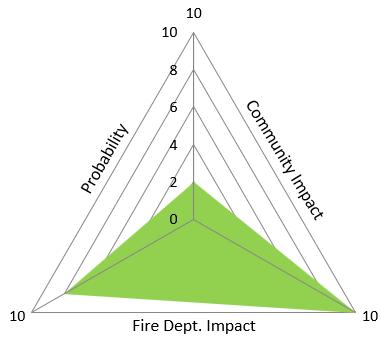
EMS Risk Classification and Categories
Low-Risk EMS
Below is an example of the risk scoring for a medical assist. The score of 20.2 categorizes this EMS incident as low risk.

Moderate-Risk EMS
Below is an example of the risk scoring for a motor vehicle accident with injuries. The score of 25.5 categorizes this EMS incident as a moderate risk.


High-Risk EMS
Below is an example of the risk scoring for mass casualty EMS incident. The score of 57 3 categorizes this EMS incident as high-risk.

Low-Risk Technical Rescue
Below is an example of the risk scoring for an elevator entrapment. The score of 4.9 categorizes this rescue incident as low risk.
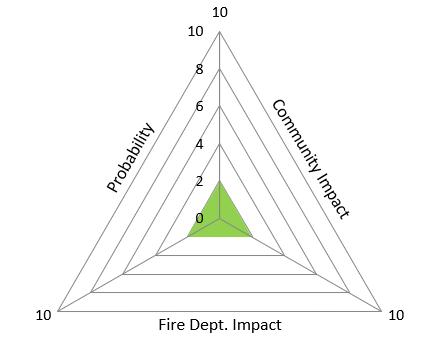
Below is an example of the risk scoring for vehicle extrication. The score of 19.8 categorizes this rescue incident as a moderate risk.


High-Risk Technical Rescue
Below is an example of the risk scoring for a high angle rescue. The score of 32 1 categorizes this rescue incident as high-risk.

Low-Risk Hazardous Condition
Below is an example of the risk scoring for a natural gas leak. The score of 13.9 categorizes this hazardous condition response as low risk.

Hazardous Condition
Below is an example of the risk scoring for power lines down. The score of 19.6 categorizes this hazardous condition response as moderate risk.


High-Risk Hazardous Condition
Below is an example of the risk scoring for a building collapse. The score of 36 8 categorizes this hazardous condition response as high-risk.
Risk: Building Collapse
Risk Categories
See appendix.
Historical Perspective and Summary of System Performance
Distribution Factors
In fire and emergency medical services, distribution refers to the placement of resources and the timeliness with which the first emergency unit reaches an incident. Resource locations may be adjusted as conditions change, but in most situations, units assigned to a specific area are considered the closest to respond.
Response times are influenced by several factors, including fire station placement within the planning area, time of day, traffic conditions, and the size of the first-due district. Understanding and evaluating these factors allows agencies to position resources strategically, improve response performance, and enhance community safety.

Fire Station 1
Station 1’s service area encompasses roughly 4.2 square miles and contains about 75.3 road miles providing access throughout the district. The map below illustrates the predicted coverage area achievable within a fourminute travel time under emergency conditions. From its current location, Truck 1 can reach approximately 50.6 road miles representing 67.0% of the road network, or about 2.8 square miles of the service area within four minutes of travel.


Station 2’s service area encompasses approximately 4.0 square miles and contains about 60 5 road miles providing access throughout the district. The map below depicts the predicted coverage area achievable within a four-minute travel time under emergency conditions. From its current location, Engine 2 can reach roughly 50.0 road miles representing 82.6% of the road network, or about 3.3 square miles of the service area within four minutes of travel.
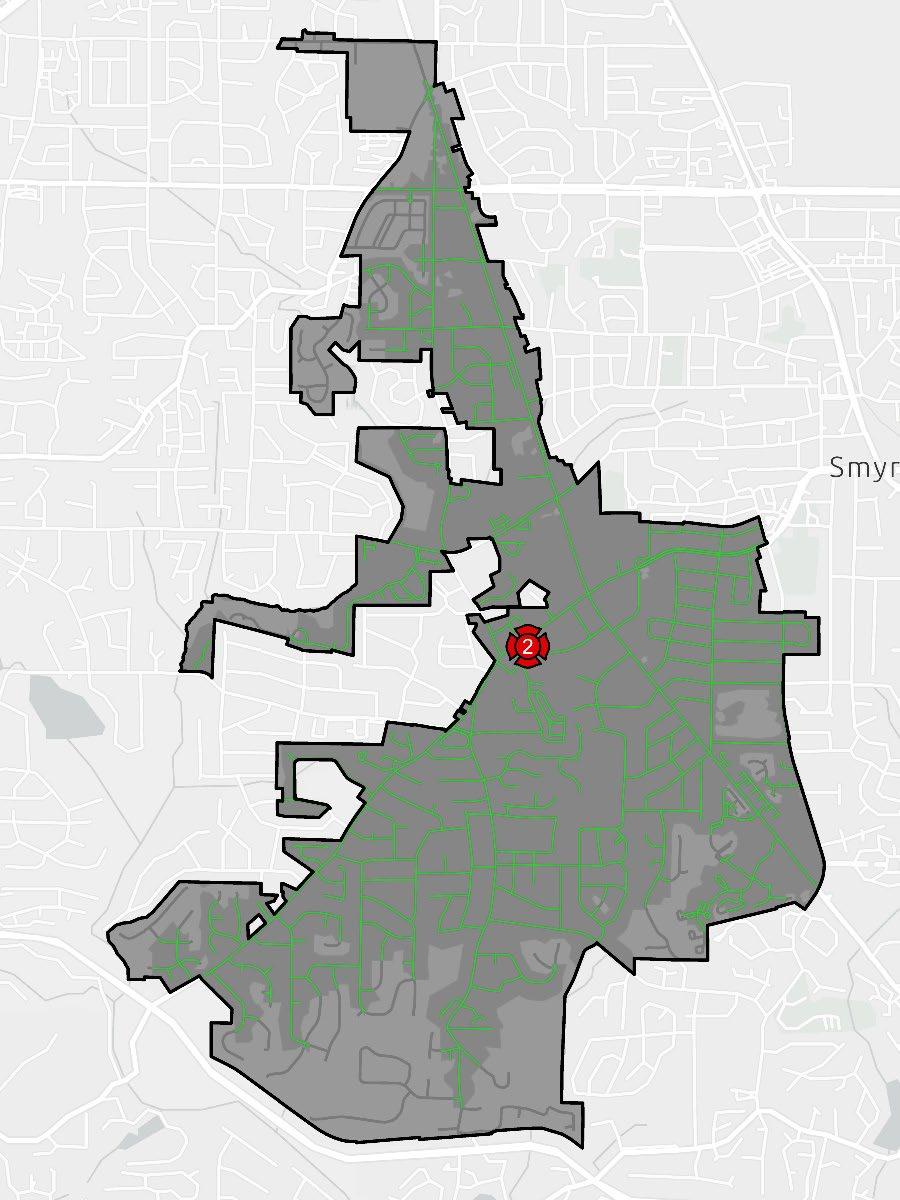

Station 3’s service area encompasses approximately 2.4 square miles and includes about 46.6 road miles providing access throughout the district. The map below illustrates the predicted coverage area achievable within a fourminute travel time under emergency conditions. From its current location, Engine 3 can reach approximately 32.6 road miles representing 69.9% of the road network, or about 1.7 square miles of the service area within four minutes of travel.
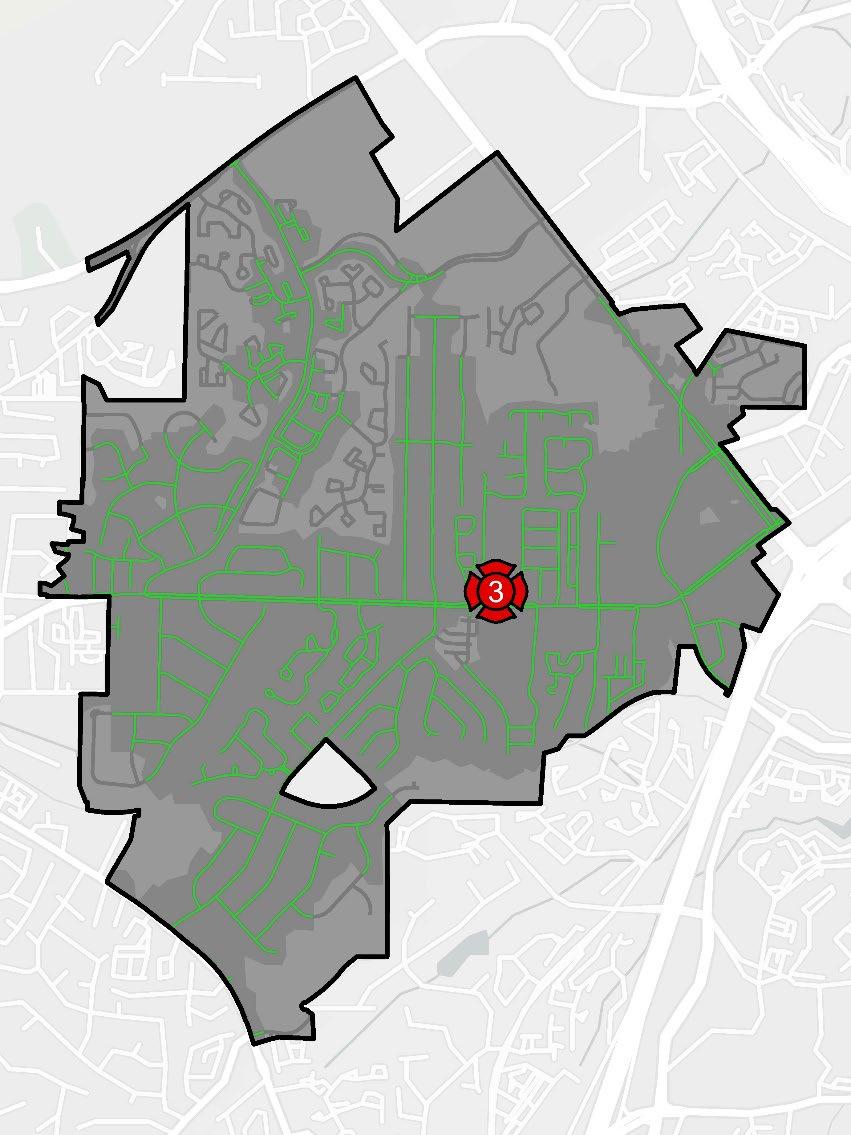

Station 4’s service area encompasses approximately 2.8 square miles and includes about 34.3 road miles providing access throughout the district. The map below illustrates the predicted coverage area achievable within a fourminute travel time under emergency conditions. From its current location, Truck 4 can reach approximately 15.5 road miles representing 45.2% of the road network, or about 1.3 square miles of the service area within four minutes of travel.


Station 5’s service area encompasses approximately 2.8 square miles and includes about 31.3 road miles providing access throughout the district. The map below illustrates the predicted coverage area achievable within a fourminute travel time under emergency conditions. From its current location, Engine 5 can reach approximately 19.5 road miles representing 62.3% of the road network, or about 1.7 square miles of the service area within four minutes of travel.
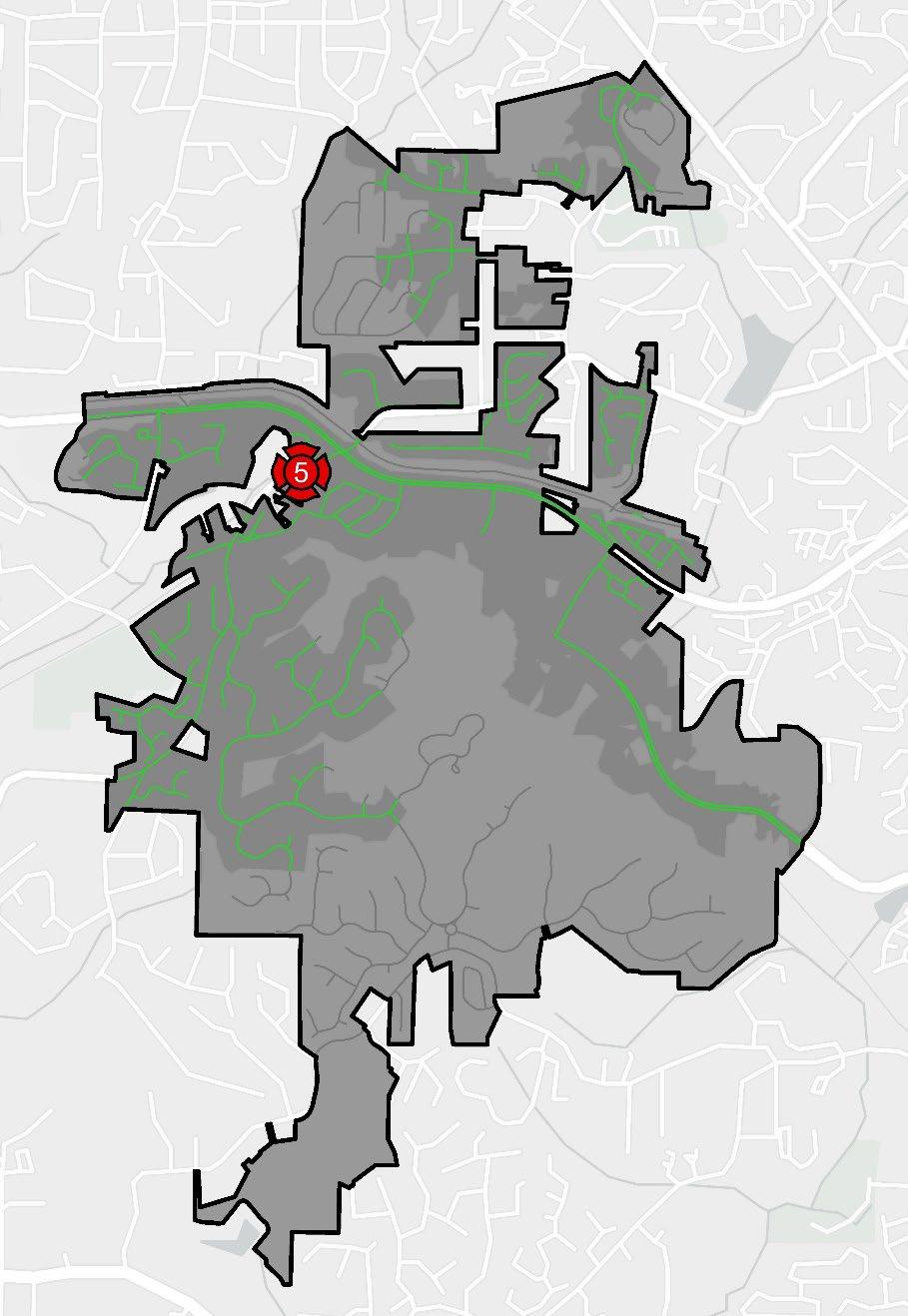

Concentration Factors
It is essential to consider both the prompt arrival of the first emergency unit and the service area’s ability to provide sufficient equipment and personnel during an incident. Several factors can affect this capability, including staffing levels. The Department operates with a maximum of 25 personnel per shift, distributed across five stations, and a minimum staffing requirement of 21 personnel per shift.
Unit Staffing by Station
Station
Service Demand by Station
Ensuring a prompt and efficient response to emergency calls is of utmost importance. To achieve this, the Smyrna Fire Department has implemented several mutual aid agreements, where additional resources may be requested as needed from other fire/EMS departments. Moreover, a continuous officer presence is present on each engine, rescue, or truck by qualifying all personnel to work “out of classification.” The fire department credentialing program requires personnel to hold the same certifications as required for the position they are working in. The number of incidents responded to in each response zone as shown below serves as a general indicator of call densities in each first-due area. It’s worth noting that more active stations may experience concurrent calls, which could necessitate a response from the next nearest unit, potentially impacting the arrival time of an effective response force.




Reliability Factors
Reliability is the study of historical data to analyze the agency's ability to meet the performance expectations even though the first due unit is committed or busy on another call for service. The analysis of the data will show how often this happens in each of the coverage areas that the agency services. Analysis of this data followed guidelines according to the CFAI Quality Improvement for the Fire and Emergency Services manual. The reliability study resulted in the agency examining the historical data to provide an analysis of the ability to meet performance expectations even if resources are committed on an existing call for service. Concurrent call analysis was performed using the Continuum platform which was summarized by incident year.
Reliability factors and handling of concurrent calls in most of the agency's coverage areas occurred one at a time. The areas of concern as noted earlier are the enterprise areas and in communities that had high densities. In contrast to EMS calls, fire incidents typically require more resources and multiple unit responses. This is dependent on the type of the fire and structure involved and property type.
Call Concurrency
Station Reliability Rates
Station reliability rates measure how often the first due unit was available to respond to an incident within its zone. While this metric has fluctuated year over year when examining each station, a general observation can be reached. Except for Fire Station 4 prior to 2024, all have maintained at or near a 90% reliability Since performance is measured at the 90th percentile, anytime reliability rates decline below 90%, travel and response performance will be affected as units from other stations must travel from their zone to respond to these incidents. This increases travel and response times and leaves additional areas empty with at times, no units available to respond within either zone.
These values are expected to change due to two factors:
1. Prior to 2025, when a station was in a reserve apparatus, they function under the reserve apparatus call sign vs. the call sign of the apparatus they represented in the response system.
2. Prior to 2024, Rescue 4 was cross staffed with Truck 4 personnel meaning, the crew decided which apparatus to respond in based on call type. In 2024, Station 4 was staffed appropriately to Improve station reliability as shown in the chart below.

Reliability Rates
Unit Hour Utilization
Another component considered when evaluating resource reliability is Unit Hour Utilization (UHU). UHU provides an expression of the workload placed on the crew assigned to that unit and describes the amount of time that a unit is not available for response because it is already committed to another incident. The larger the percentage, the greater its utilization, and the less available it is for assignment to subsequent calls for service, training, and ancillary duties. Expressed as a percentage, UHU rates represent the percentage of the total hours of use in a year.
An important factor regarding UHU and response performance is the relationship between how often a unit is available to respond to calls versus the performance metric used to evaluate performance. The next section assesses performance using NFPA 1710 criteria at the 90th percentile. If a unit is unavailable greater than 10% of the time, some portion of the 90th percentile fractile performance will be negatively affected as units from other stations must leave their respective response district and travel into that zone where the unit is unavailable. This degrades response performance, increases wait times on scene, and results in another zone where the first due unit is available and out of position.
Prior to this study, the Smyrna Fire Department used Engine 14 to cover vacancies of out of service engine and truck companies throughout the City. When a crew was using Engine 14, these crews were assigned as the Engine 14 unit and not as their typical primary unit from their station. Because of this, a true calculation of the crews’ UHU rates was difficult as the unit moved from one station to another and created holes within the data that subsequently were backfilled with use dates for Engine 14. In the future, the Smyrna Fire Department may consider maintaining the crews with their primary apparatus using that vehicle's Mobile Data Terminal (MDT) so that an accurate UHU rate may be calculated for each crew.
Displayed below are the UHU rates for front line units. It is important to understand that UHU is seeking to measure how busy a crew is and not how many hours a particular apparatus accrues over the course of the year. When too few crews are available for response and UHU levels exceed performance thresholds, the ability of that crew to complete required training, additional duties, and have time for meals or recovery diminishes.

Comparability Factors
Comparability is a process of comparing one fire rescue department to other like fire rescue departments. The agency municipalities hold individual ISO ratings of a 1 or 2 and is also accredited by the Commission on Accreditation of Ambulance Services. Being that the agency services over 300,000 residents throughout the county, makes it challenging to compare to other agencies, as there are too many variables that make neighboring fire departments different.
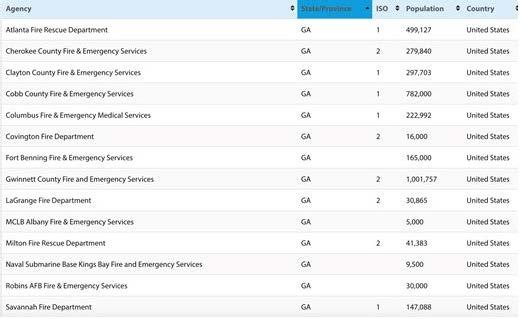
What is notable when analyzing neighboring agencies is how many local departments are becoming accredited. This has a significant impact on response times, as departments are collaborating to improve. The Consortium has provided another avenue to share information and introduce accreditation to other area fire departments. Currently, there are at least three local fire departments in the process of seeking accreditation status.

Evaluation of Service Delivery
Response Time Elements
Response time is a critical indicator of the Smyrna Fire Department’s ability to deliver timely emergency services and directly impacts life safety, property conservation, and incident outcomes. It represents the total time from when a 911 call is received to when the first unit arrives on scene. This overall response time is composed of three distinct segments: call processing time, which measures the efficiency of emergency call handling and dispatching; turnout time, which measures the readiness and promptness of crews to begin responding; and travel time, which measures the effectiveness of station placement, apparatus deployment, and roadway access. Monitoring and analyzing each of these elements allows the department to identify performance gaps, allocate resources strategically, and continuously improve service delivery in alignment with nationally recognized standards such as NFPA 1710 and CPSE accreditation criteria.


Benchmark and Baseline Deployment Objectives
Fire Suppression
Fire Suppression Services – Distribution Benchmarks – First Due
For 90 percent of all low, moderate, and high-risk fire suppression incidents, the total response time for the arrival of the first- due unit, staffed with 3 firefighters and officers, shall be: 7 minutes and 30 seconds. The first-due unit for all risk levels shall be capable of: providing 500 gallons of water and 1,500 gallons per minute (gpm) pumping capacity; initiating command, advancing a first attack line flowing a minimum of 150 gallons per minute, and establishing an uninterrupted water source. These operations shall be done in accordance with departmental standard operating guidelines while providing for the safety of responders and the general public.
Fire Suppression Services – Concentration Benchmarks - Effective Response Force
For 90 percent of all moderate risk fire incidents, the total response time for the arrival of the effective response force (ERF), staffed with 7 firefighters and officers, shall be: 10 minutes and 30 seconds. For incidents involving high risk fires, additional resources are requested by the incident commander once a working incident is confirmed and the resources are deemed necessary to bring the effective response force of 11 firefighters to include fire officers. The ERF for all moderate risk structures fires shall be capable of establishing command; providing an uninterrupted water supply; advancing an attack line and a backup line for fire control; complying with the Occupational Safety and Health Administration (OSHA) requirements of two in-two out; completing forcible entry; searching and rescuing at-risk victims; ventilating the structure; controlling utilities; and performing salvage and overhaul. The ERF for high-risk structure fires shall also be capable of placing elevated streams into service from aerials and provide supplemental rapid intervention resources. These operations shall be done in accordance with departmental standard operating procedures while providing for the safety of responders and the general public.
Fire Suppression Services - Baseline Fire Suppression Response Objectives – First Due
For 90 percent of all low fire suppression incidents, the total response time for the arrival of the first-due unit, staffed with 3 firefighters and officers, is: 7 minutes and 30 seconds. The first-due unit for all risk levels shall be capable of: providing 500 gallons of water and 1,500 gallons per minute (gpm) pumping capacity; initiating command, advancing a first attack line flowing a minimum of 150 gallons per minute, and establishing an uninterrupted water source. These operations shall be done in accordance with departmental standard operating procedures while providing for the safety of responders and the general public.

For 90 percent of moderate risk fire incidents to include structures, the total response time for the arrival of the effective response force (ERF), staffed with 7 firefighters, to include fire officers, is: 10 minutes and 30 seconds For incidents involving high risk fires, additional resources are requested by the incident commander. Once a working incident is confirmed and the resources are deemed necessary, the total response time for the arrival of the ERF staffed with 20 firefighters and officers, is: 10 minutes and 30 seconds. The ERF for all moderate risk structures fires shall be capable of establishing command; providing an uninterrupted water supply; advancing an attack line and a backup line for fire control; complying with the Occupational Safety and Health Administration (OSHA) requirements of two in-two out; completing forcible entry; searching and rescuing at-risk victims; ventilating the structure; controlling utilities; and performing salvage and overhaul. The ERF for high-risk fires shall also be capable of placing elevated streams into service from aerials and provide supplemental rapid intervention resources. These operations shall be done in accordance with departmental standard operating procedures while providing for the safety of responders and the general public.


Low-Risk Fire Suppression Gap Summary (Urban) 20202024 Target Benchmark Gap
Alarm Handling Pick-up to Dispatch 1:49 1:00 0:49
Turnout Time Turnout Time1st Unit 1:55 1:30 0:25
Travel Time Travel Time - 1st Unit Distribution 6:29 5:00 1:29
Travel TimeERF Concentration 6:25 5:00 1:25
Total Response Time

Total Response Time - 1st Unit on Scene Distribution 09:26 (n=1,763) 7:30 1:55
Total Response Time - ERF Concentration 09:15 (n=2,204) 7:30 1:45
Moderate-Risk Fire Suppression - 90th Percentile Times - Baseline Performance (Urban)

Moderate-Risk Fire Suppression Gap Summary (Urban) 20202024 Target Benchmark Gap
Alarm Handling Pick-up to Dispatch 1:00 1:00 0:00
Turnout Time
Turnout Time1st Unit 2:01 1:30 0:29
Travel Time Travel Time - 1st Unit Distribution 5:34 5:00 0:33
Travel TimeERF Concentration 6:26 8:00 1:34
Total Response Time

Total Response Time - 1st Unit on Scene Distribution 08:42 (n=5) 7:30 1:11
Total Response Time - ERF Concentration 10:08 (n=4) 10:30 0:23
-

High-Risk Fire Suppression Gap Summary (Urban) 20202024 Target Benchmark Gap
Alarm Handling Pick-up to Dispatch 1:27 1:00 0:27
Turnout Time
Turnout Time1st Unit 2:30 1:30 1:00
Travel Time Travel Time - 1st Unit Distribution 6:30 5:00 1:30
Travel TimeERF Concentration 13:17 8:00 5:17
Total Response Time

Total Response Time - 1st Unit on Scene Distribution 09:18 (n=79) 7:30 1:47
Total Response Time - ERF Concentration 13:60 (n=57) 10:30 3:29
Emergency Medical Services – Distribution Benchmarks – First Due
For 90 percent of all low, moderate, and high-risk EMS responses, the total response time for the arrival of the first-due unit, staffed with 2 personnel capable of providing advanced pre-hospital care is shall be: 7 minutes and 30 seconds. The first- due unit shall be capable of: assessing scene safety and establishing command; sizing-up the situation; conducting initial patient assessment; obtaining vitals and patient’s medical history; initiating mitigation efforts within one minute of arrival; providing first responder medical aid including defibrillation; and assisting transport personnel with packaging the patient.
Emergency Medical Services – Concentration Benchmarks- Effective Response Force
For 90 percent of all moderate EMS response incidents, the total response time for the arrival of the department’s effective response force (ERF), staffed with 5 firefighters capable of providing advanced pre-hospital care is, shall be: 8 minutes. The ERF shall be capable of providing incident command and producing related documentation; appointing a site safety officer; completing patient assessment; providing appropriate treatment; performing defibrillation; initiating cardiopulmonary resuscitation (CPR); and providing for traffic control when necessary. For incidents involving multiple patients with significant injuries, additional resources are requested by the incident commander to bring the effective response force up to 15 firefighters/pre-hospital medical providers, capable of providing appropriate treatment and establishing triage. These operations shall be done in accordance with departmental standard operating procures while providing for the safety of responders and the general public.
The department relies upon Metro Atlanta EMS, a third-party provider, to function as the primary transport agency for EMS incidents within the city limits and complete the transport component of the ERF. If a third-party EMS provider arrives at the scene before the first-due unit, they initiate care, and personnel from the initial fire department resource assist as needed. A limiting factor with this arrangement is that the Smyrna Fire Department is currently unable to track or document Metro Atlanta Ambulance’s performance metrics due to how both agencies are dispatched.

Emergency Medical Services - Baseline Emergency Medical Response Objectives – First Due
The department’s benchmark service level objectives for emergency medical services at the basic life support level are as follows: The first arriving unit shall be capable of providing a minimum of three personnel on an engine or aerial, or two personnel on a rescue unit with a minimum of one capable of providing Advanced Life Support. The apparatus shall be equipped with a standard complement of medical equipment in accordance with the Georgia Department of Public Health Medical First Responder Vehicle Checklist.
For 90 percent of all low-risk EMS responses, the total response time for the arrival of the first-due unit, staffed with 2 firefighters capable of providing advanced pre-hospital care is: 7 minutes and 30 seconds. The first-due unit shall be capable of: assessing scene safety and establishing command; sizing-up the situation; conducting initial patient assessment; obtaining vitals and patient’s medical history; initiating mitigation efforts within one minute of arrival; providing pre-hospital medical care; and assisting transport personnel with packaging the patient.
Emergency Medical Services - Baseline Emergency Medical Response Objectives – ERF
For 90 percent of all moderate risk EMS response incidents, the total response time for the arrival of the department ERF, staffed with 5 personnel capable of providing advanced pre-hospital care is: 8 minutes. The ERF shall be capable of: providing incident command and producing related documentation; appointing a site safety officer; completing patient assessment; providing appropriate treatment; performing defibrillation; initiating cardiopulmonary resuscitation (CPR); and providing traffic control when necessary.
The department relies upon Metro Atlanta EMS, a third-party provider, to function as the primary transport agency for EMS incidents within the city limits and complete the transport component of the ERF. The initial arriving fire department company shall have the capabilities of providing advanced life support including defibrillation until the third-party provider arrives on scene. If a third-party EMS provider arrives at the scene before the firstdue unit, they initiate care, and personnel from the initial fire department resource assist as needed. It is also important to note that there were no high-risk responses during this appraisal period.
If a third-party EMS provider arrives at the scene before the first-due unit, they initiate care, and personnel from the initial fire department resource assist as needed. A limiting factor with this arrangement is that the Smyrna Fire Department is currently unable to track or document Metro Atlanta Ambulance’s performance metrics due to how both agencies are dispatched


Alarm Handling Pick-up to Dispatch 0:43 1:00 0:17 Turnout Time Turnout Time1st Unit 1:49 1:30 0:19 Travel Time Travel Time - 1st Unit Distribution 5:35 5:00
Travel TimeERF Concentration 5:34 5:00
Total Response Time

Total Response Time - 1st Unit on Scene Distribution 07:12 (n=602) 7:30 0:19
Total Response Time - ERF Concentration 07:10 (n=727) 7:30 0:20

Moderate-Risk EMS Gap Summary (Urban) 20202024 Target Benchmark Gap
Alarm Handling Pick-up to Dispatch 1:36 1:00 0:36 Turnout Time Turnout Time1st Unit 1:45 1:30 0:15
Travel Time Travel Time - 1st Unit Distribution 6:04 5:00 1:04
Travel TimeERF Concentration 6:54 8:00 1:06
Total Response Time

Total Response Time - 1st Unit on Scene Distribution 08:33 (n=9,473) 7:30 1:03
Total Response Time - ERF Concentration 08:46 (n=666) 10:30 1:44
Response

Alarm Handling Pick-up to Dispatch 2:02 1:00 1:02 Turnout Time Turnout Time1st Unit 1:46 1:30 0:15
Travel Time Travel Time - 1st Unit Distribution 6:06 5:00 1:06
Travel TimeERF Concentration 13:42 8:00 5:42
Total Response Time

Total Response Time - 1st Unit on Scene Distribution 08:20 (n=21) 7:30 0:50
Total Response Time - ERF Concentration 16:27 (n=1) 10:30 5:57
Technical Rescue Services – Distribution Benchmarks - First Due
For 90 percent of all low, moderate, and high-risk technical rescue incidents, the total response time for the arrival of the first-due unit, staffed with 3 firefighters and officers, shall be: 7 minutes and 30 seconds. The first due unit shall be capable of: establishing command; assignment of a formal safety officer; sizing up to determine if a technical rescue response is required; requesting additional resources; and providing basic life support to any victim without endangering response personnel.
Technical Rescue Services – Concentration Benchmarks - Effective Response Force
For 90 percent of all moderate risk technical rescue incidents, the total response time for the arrival of the effective response force (ERF), staffed with 5 firefighters, including fire officers, shall be: 10 minutes and 30 seconds. The ERF shall be capable of: providing technical expertise, knowledge, skills, and abilities during technical rescue incidents.
For 90 percent of all high-risk technical rescue incidents that require specialized team response including technical response team members from the necessary discipline, the total response time for the arrival of the effective response force (ERF), staffed with 12 firefighters, including fire officers. The ERF shall be capable of establishing patient contact; staging and apparatus set up; providing technical support knowledge, skills and abilities during technical rescue incidents; and providing patient care.
An incident is typically categorized as high-risk if external resources are necessary, such as Cobb County Technical Rescue, or if the escalating needs of the scene require more Smyrna Fire Department personnel. The incident commander can always request more resources as necessary.

Technical Rescue Services - Baseline Technical Rescue Response Objectives – First Due
The first unit shall be capable of assessing the situation to determine the presence of a potential technical rescue; determining the need for additional resources, estimating the potential harm without intervention, establishing command in accordance with the National Incident Management System, denying entry, and isolating the area.
For 90 percent of all low-risk technical rescue incidents, the total response time for the arrival of the first-due unit, staffed with 3 firefighters, to include fire officers, is: 7 minutes and 30 seconds. The first-due unit shall be capable of: establishing command; sizing up determining if a technical rescue response is required; requesting additional resources; and providing basic life support to any victim without endangering response personnel.
Technical Rescue Services - Baseline Technical Rescue Response Objectives – ERF
For 90 percent of all moderate risk technical rescue incidents, the total response time for the arrival of the ERF, staffed with 5 firefighters and officers, is: 8 minutes. The ERF is capable of appointing a site safety officer; establishing patient contact; staging and apparatus set up; providing technical expertise, knowledge, skills, and abilities during technical rescue incidents; and providing first responder medical support.
For 90 percent of all high-risk technical rescue incidents that require specialized team response, the total response time for the arrival of the effective response force (ERF) that includes the units initially dispatched including technical response team members from the necessary discipline, staffed with 12 firefighters, to include fire officers is: not enough data points to analyze. The ERF shall be capable of establishing patient contact; staging and apparatus set up; providing technical expertise, knowledge, skills and abilities during technical rescue incidents; and providing first responder medical support. It is important to note there were a very small number of incident responses that involved a specialized team request to include team equipment and resources; therefore, the data sample was too small to provide for sufficient analysis.





